Landmark LGBTQ+ history in every state
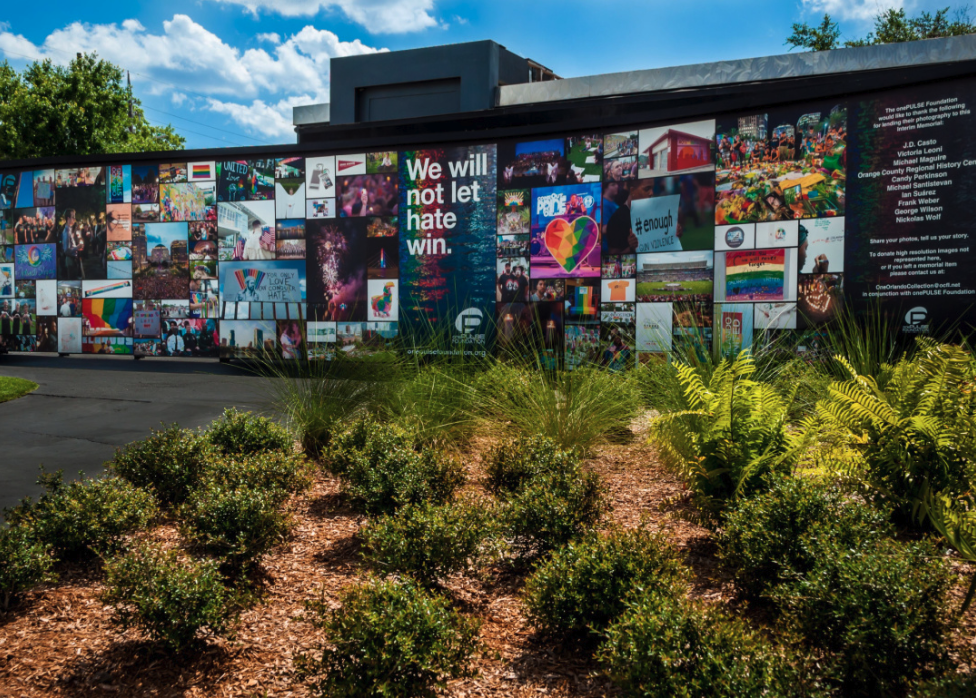
Anthony Constantine // Shutterstock
Landmark LGBTQ+ history in every state
Pulse Nightclub Interim Memorial east wall photographs and tribute garden
Most of the best-known and pivotal moments in LGBTQ+ history—and the places associated with them—revolve around East and West Coast cities like San Francisco and New York or LGBTQ+-friendly beach towns like Provincetown, Massachusetts.
Of course, not all LGBTQ+ Americans live in coastal metropolises. In fact, some of the states with the largest LGBTQ+ populations are in the Midwest, South, and Western regions of the United States, according to the Williams Institute. And between 15% and 20% of LGBT Americans—roughly 2.9-3.8 million people—live in rural areas, according to 2019 estimates. Queer people are and have always been dispersed throughout the country, existing in every state and community.
LGBTQ+ history is likewise a part of every state, though much of it is less well-known than landmark events like Stonewall or the assassination of Harvey Milk. Nonetheless, all LGBTQ+ communities’ activism and contributions have played an essential role in bolstering queer visibility and acceptance and gaining fundamental rights that were frequently denied.
To celebrate these contributions, Stacker compiled a list of landmark LGBTQ+ history in every state using a variety of news, historical, and academic sources.
You may also like: What kind of data is your car collecting about you?
![]()
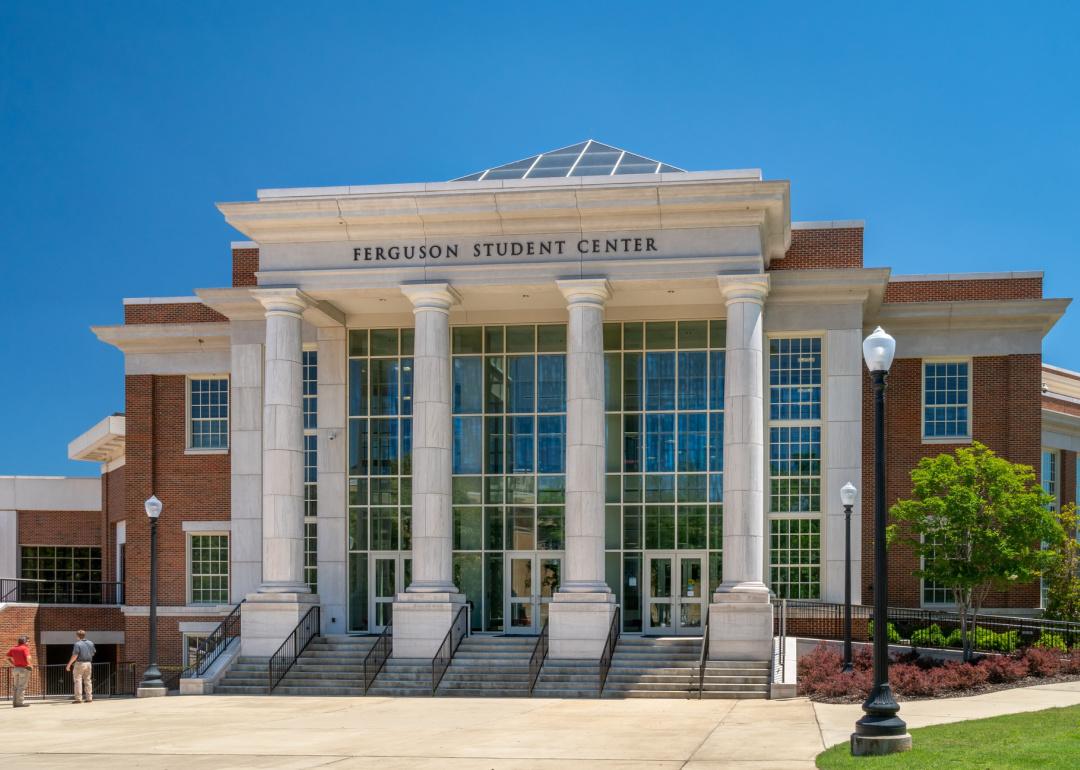
Ken Wolter // Shutterstock
Alabama
Ferguson Student Center at University of Alabama
Students at the University of Alabama founded the Gay Student Union in 1983
The first of its kind in the state, the University of Alabama Gay Student Union paved the way for other LGBTQ+ student groups to form across Alabama, including the Auburn Gay & Lesbian Association in 1993. Auburn students’ struggle to start the group made headlines after the school’s Student Government Association refused to give the group a charter, and then-Alabama Gov. Gary Hunt signed a bill prohibiting LGBTQ+ student groups from using public funds or school buildings. The university sued both the group’s proponents and those opposed in a case that ended up in federal court.
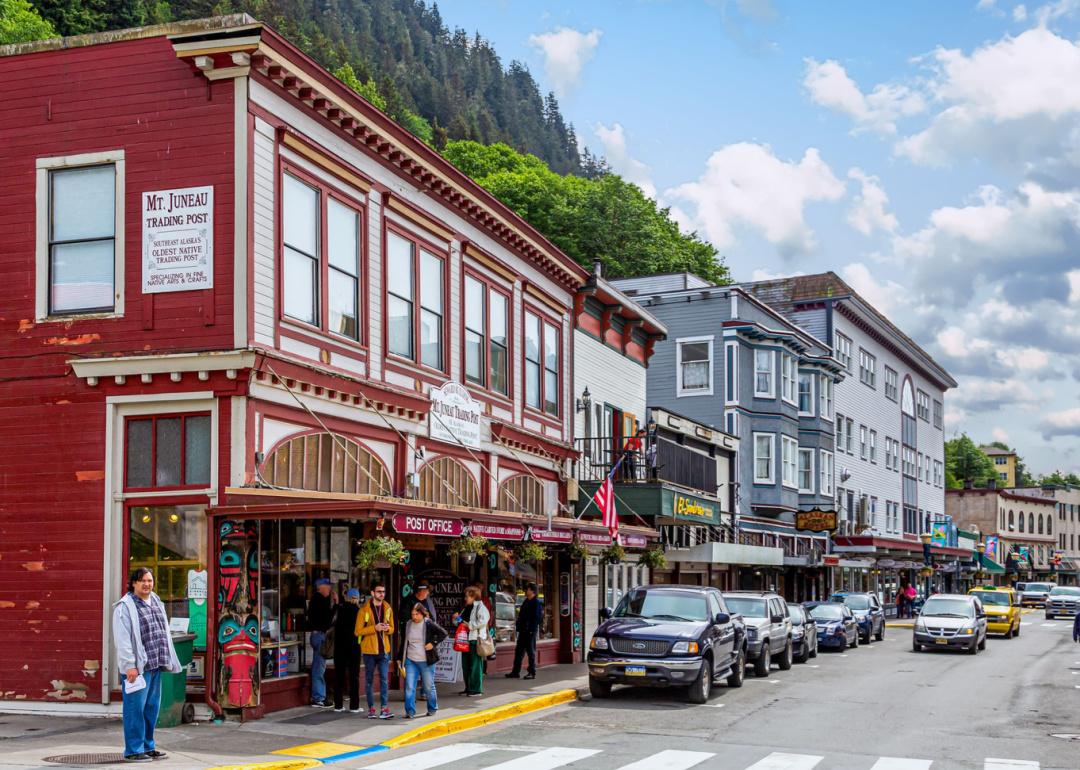
Darryl Brooks // Shutterstock
Alaska
Street scene in Juneau Alaska
The small town of Barrow was home to Alaska’s first gay marriage in 2014
Voters in Alaska banned same-gender marriages in 1998 by a constitutional amendment, the first of its kind in the nation. In 2014, a federal judge struck down the ban, and a magistrate in the Arctic Coast town of Barrow waived the three-day waiting period between getting an application and performing the ceremony, allowing for the first legal lesbian wedding on Oct. 14, 2014.
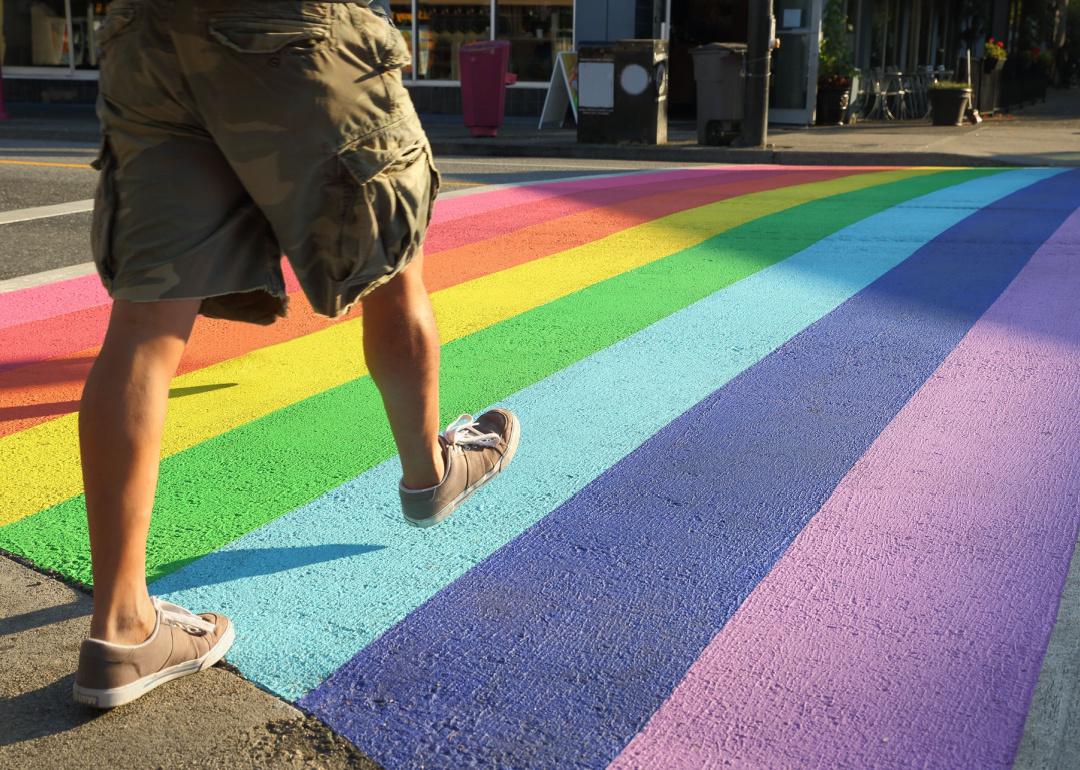
Max Lindenthaler // Shutterstock
Arizona
Person walking across a rainbow colored crosswalk
An Arizona native and Navy veteran created the transgender pride flag in 1999
Monica Helms grew up in Phoenix and served in the Navy for eight years. Ten years later, Helms came out as transgender and became an activist working for trans visibility and equality. She created the pink, blue, and white striped flag to represent trans pride, mixing the traditionally gendered colors and adding a white line in the middle to represent gender-nonconforming, transitioning, and intersex people. In 2000, Helms’ flag debuted at Phoenix’s Pride celebrations, and it has since spread worldwide.
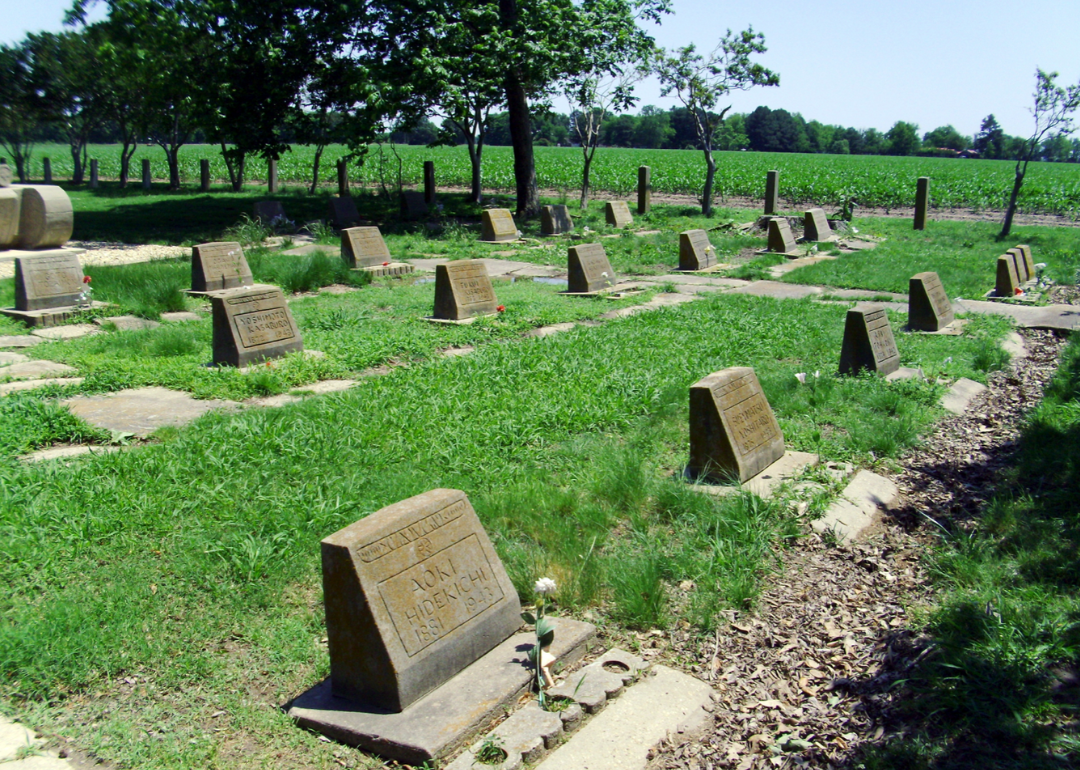
Brandon Rush // Wikimedia Commons
Arkansas
Gravestones at Rohwer War Relocation Center
George Takei, a gay Japanese American actor, director, author, and activist, was detained at Rohwer War Relocation Center with his family during WWII
Most famous for his portrayal of Sulu in “Star Trek,” George Takei was only 5 years old when he and his family were taken from their California home, transferred to a train by armed guards, and sent to an internment camp in Arkansas, the easternmost camp in the U.S. Takei and his family were later transferred to another camp, the Tule Lake Segregation Center, in northern California. His family lost their home while incarcerated and were forced to live on the streets when the Second World War was over. Today, Takei is known for his activism for LGBTQ+, immigrant, and Asian American rights.
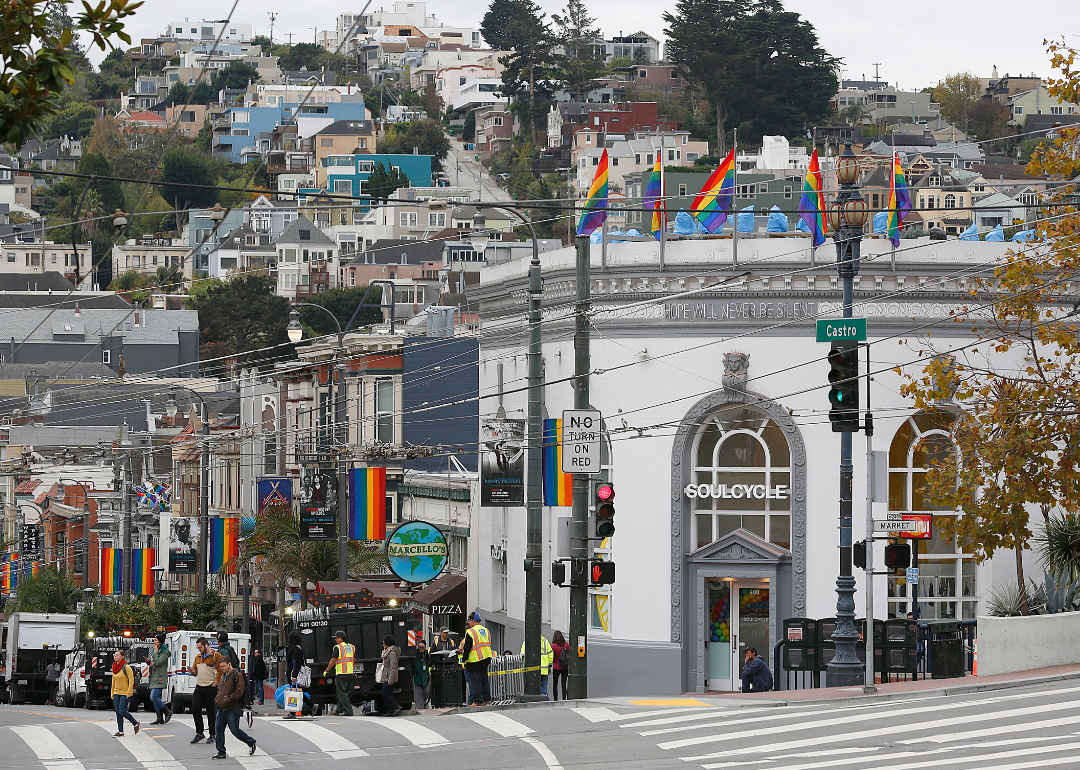
Liz Hafalia/The San Francisco Chronicle via Getty Images
California
View of Castro Street and Harvey Milk Plaza in San Francisco
Harvey Milk Plaza in San Francisco commemorates Harvey Milk, an LGBTQ+ politician and activist known as the “Mayor of Castro Street”
In 1978, Harvey Milk became the first out gay man to be elected to public office when he was voted onto the San Francisco Board of Supervisors on a platform of LGBTQ+ rights. Milk was a community organizer and defender of marginalized communities’ rights. The same year he was elected, he and the city’s progressive mayor, George Moscone, were assassinated at San Francisco’s City Hall. In memory of Milk, the intersection of Castro and Market Streets—the heart of the city’s historic LGBTQ+ neighborhood—was designated Harvey Milk Plaza.
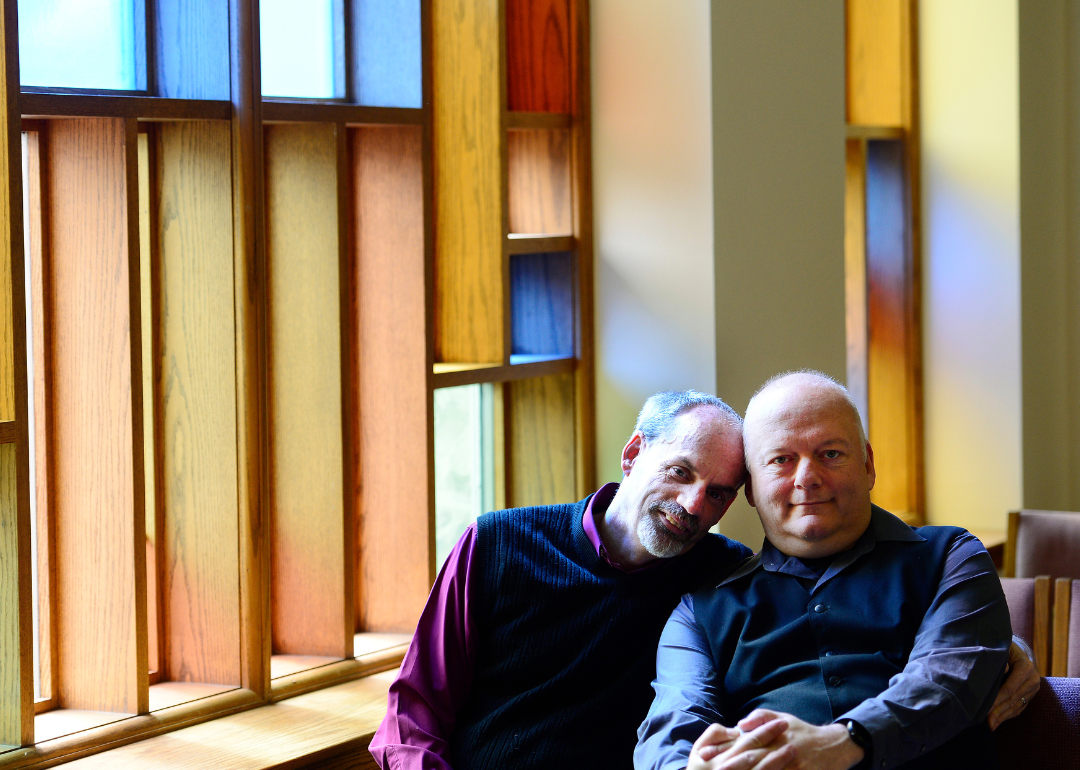
Anya Semenoff/The Denver Post via Getty Images
Colorado
Eddy Carroll Glenn Barrows pose for a photograph at the First Unitarian Society of Denver
The First Unitarian Church of Denver has a long history of LGBTQ+, suffrage, and antiracist activism
Initially built in the 1890s, the First Unitarian Church of Denver building has been a hub for several generations of activism, from civil rights groups in the 1960s to some of the first gay rights groups to movements as recent as Black Lives Matter. The church hosted same-gender weddings in the mid-’70s when gay marriage wasn’t yet technically legal in Colorado and continued doing so in 2014 when the state legalized same-gender marriage. The First Unitarian Church of Denver building was designated a historic landmark in 2017.

Pi.1415926535// Wikimedia Commons
Connecticut
Exterior view of the James Merrill House
The James Merrill House was the home of James Merrill, a Pulitzer Prize-winning gay poet
James Merrill was born in New York City in 1926. Renowned for his poetry, Merrill was considered one of the leading writers of the 20th century. Throughout his lifetime, he won the Pulitzer Prize, two National Book Awards, and several other honors for his work. He was also Connecticut’s first poet laureate, and he lived in a house in Stonington for several decades with his partner, David Jackson. Parts of the house have been preserved since Merrill’s death in 1995 and are sometimes open to the public. The house also hosts a writers’ residency.
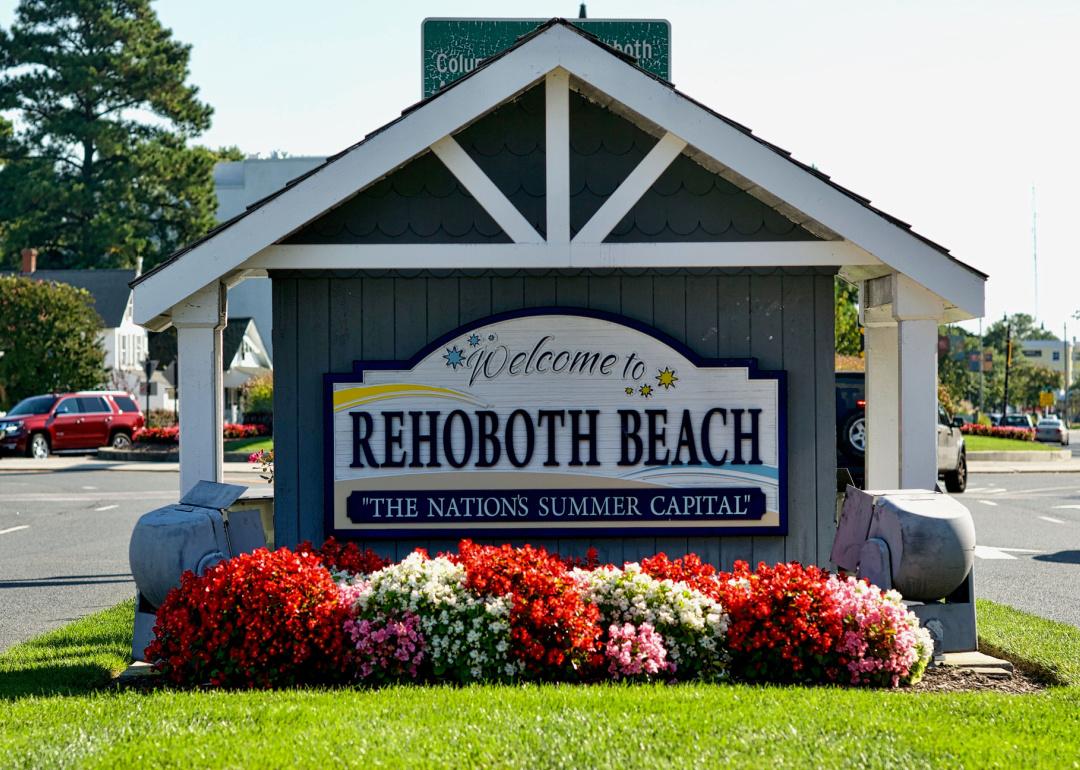
John M. Chase// Shutterstock
Delaware
Welcome sign greets visitors to Rehoboth Beach, “The Nation’s Summer Capital”
The Boathouse and the Renegade were both gay dance clubs opened in Rehoboth Beach during the disco era
Rehoboth Beach has been a queer enclave since the 1940s and 1950s, particularly as a vacation town for those in the surrounding Mid-Atlantic region. In particular, gay legislators and other Washington D.C. area residents flocked to the beach town during summers, where a thriving gay bar and club scene presented safe spaces for LGBTQ+ people to commune. The Boathouse and the Renegade—neither of which are still in operation—were both destinations for dancing and hubs for the community.
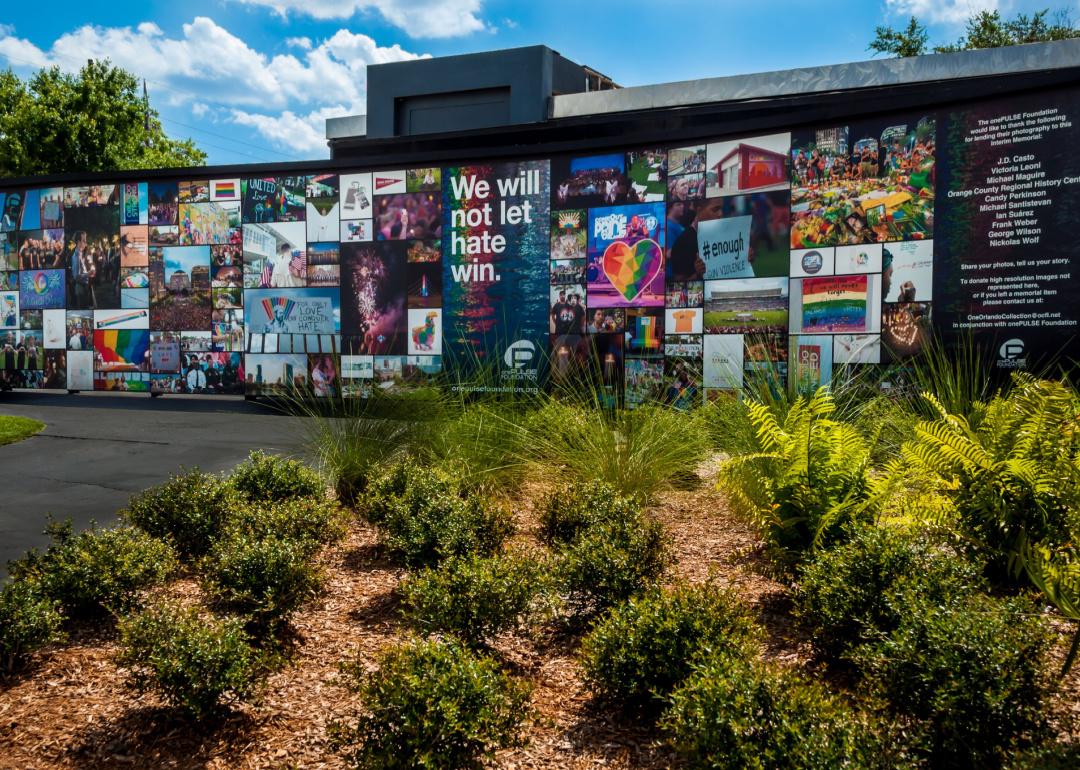
Anthony Constantine // Shutterstock
Florida
Pulse Nightclub Interim Memorial east wall photographs and tribute garden
The National Pulse Memorial and Pulse Museum Collection were created in honor of those who died during the 2016 Pulse nightclub shooting
After a gunman killed 49 people at Orlando’s Pulse nightclub, a well-known gay club that drew crowds for dancing, the National Pulse Memorial was created to honor the victims and their loved ones. The mass shooting, which remains the second-deadliest in U.S. history, was also the most fatal LGBTQ+ attack in the country and shook members of the LGBTQ+ community worldwide. The city of Orlando is currently in the process of erecting a permanent museum and memorial.
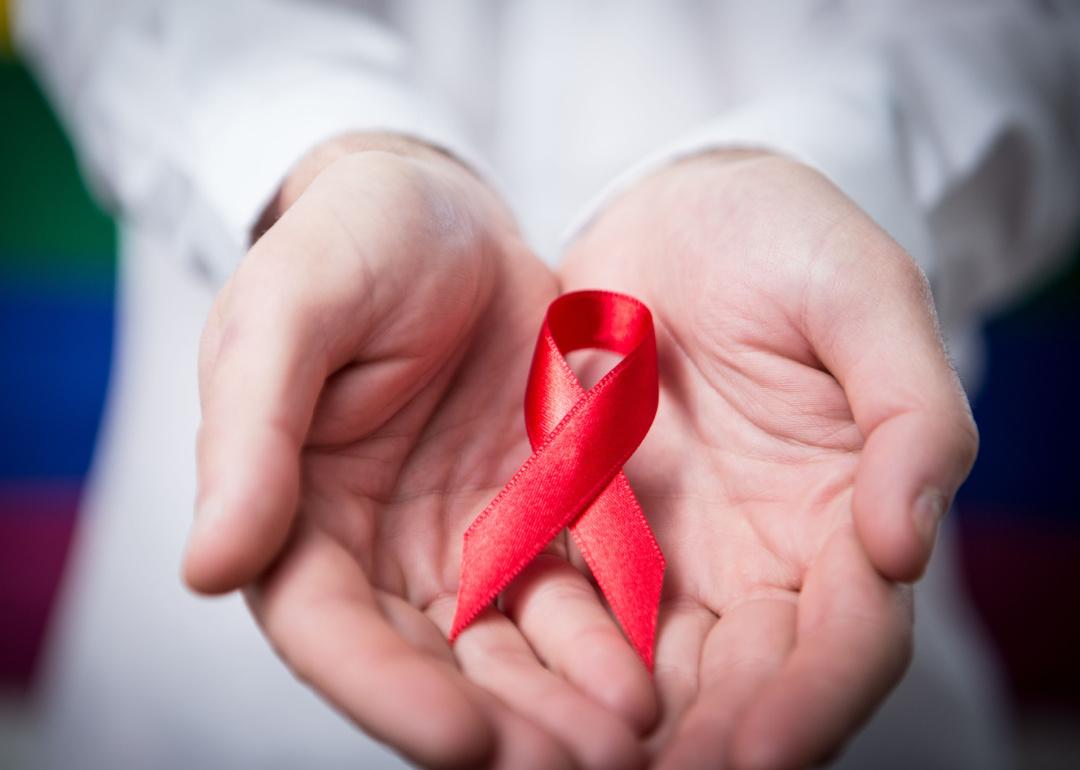
wavebreakmedia // Shutterstock
Georgia
Hands holding red aids awareness ribbon on rainbow background
AID Atlanta started as a way to provide HIV/AIDS-related services and education to LGBTQ+ Atlantans
One year into the HIV/AIDS epidemic, AID Atlanta opened its doors to community members needing support and education about the crisis. Run by volunteers, the organization’s opening in 1982 marked one of the first of its kind in the region and the nation. AID Atlanta still operates today and offers care and medical services related to AIDS prevention and treatment.
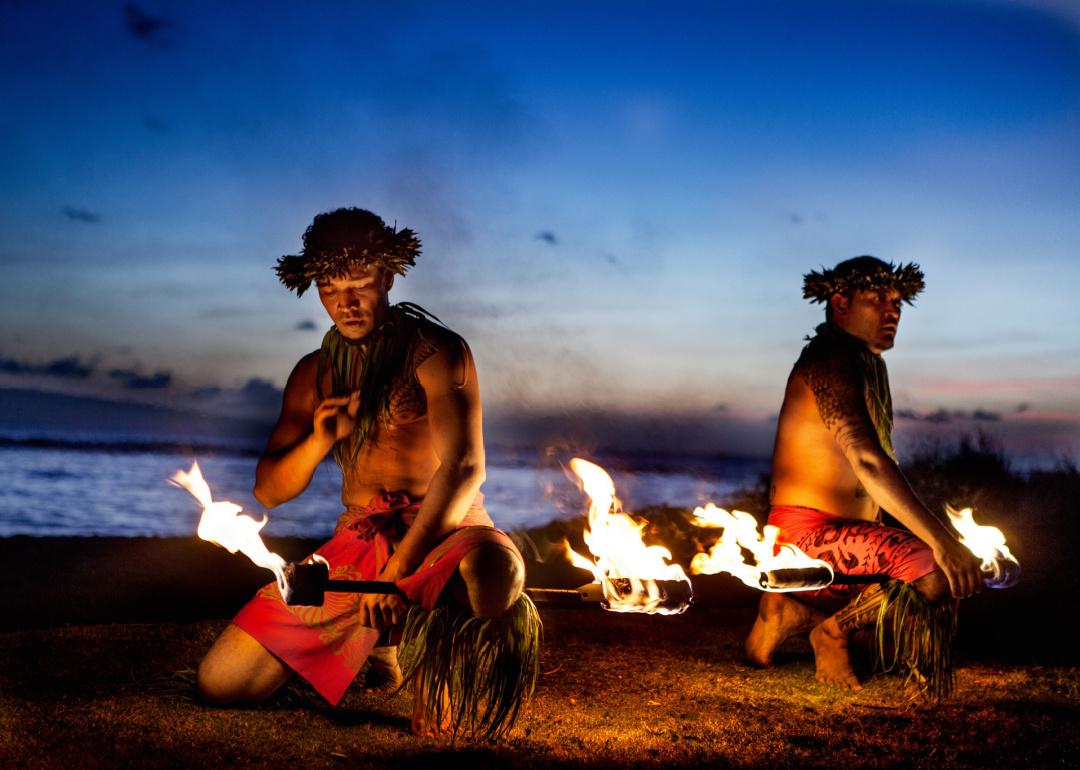
Deborah Kolb // Shutterstock
Hawaii
Two Hawaiian men preparing for traditional fire dance
Native Hawaiians saw gender and sexuality as a fluid spectrum, with “māhū” or “in-between” people who embodied both masculine and feminine spirit, occupying an important cultural place in society
Before white missionaries arrived to colonize Hawaii in the 1800s, Native Hawaiians, or Kanaka Maoli, honored people who did not fall into binary gender categories. Same-gender relationships, or aikāne, were also widely accepted. However, the arrival of white missionaries changed the connotation of māhū when they used the term pejoratively and imposed Western hetero- and cis-normative ideas on Native Hawaiian culture. Today, the word māhū is often used as a derogatory term toward LGBTQ+ community members, though some are reclaiming the word’s original meaning.
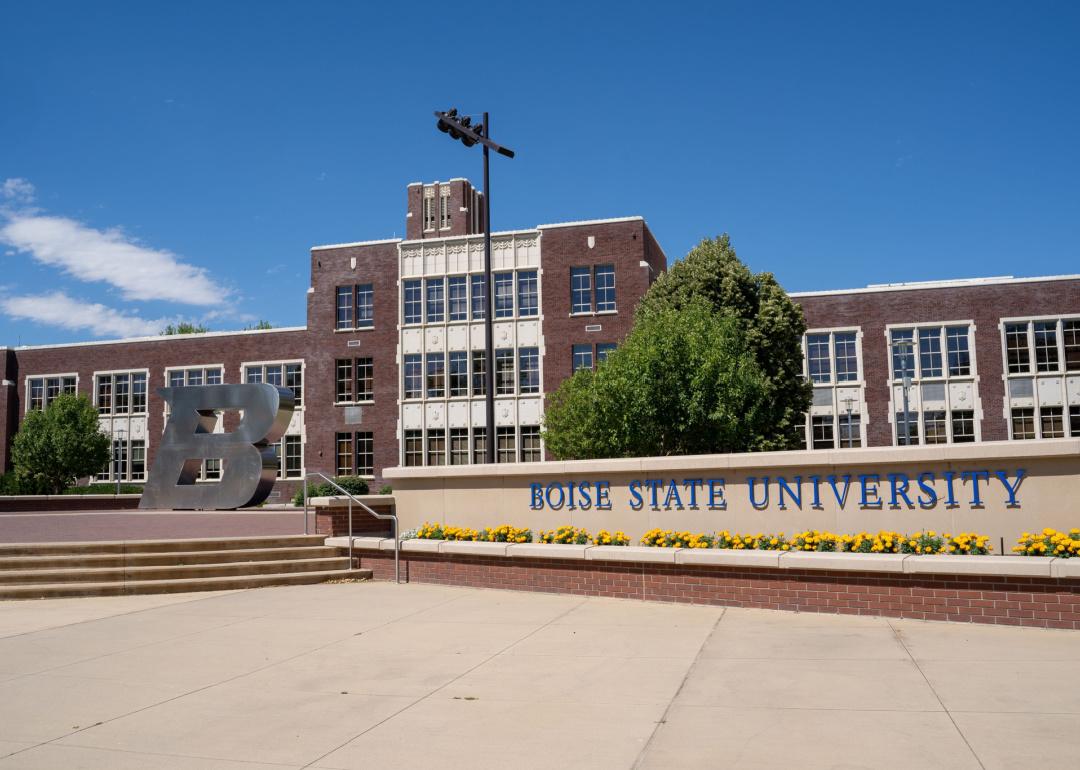
melissamn // Shutterstock
Idaho
Boise State University college campus
The Idaho LGBTQ Oral History Project aims to collect the stories of the LGBTQ+ community and to conserve important Idaho history
What began as a class project for Intro to LGBTQ Studies at Boise State University has become a publicly accessible archive of oral histories from LGBTQ+ Idahoans. The project, created by Dr. Riley Caldwell-O’Keefe, sheds light on the little-known queer history of Idaho by way of students interviewing community members.
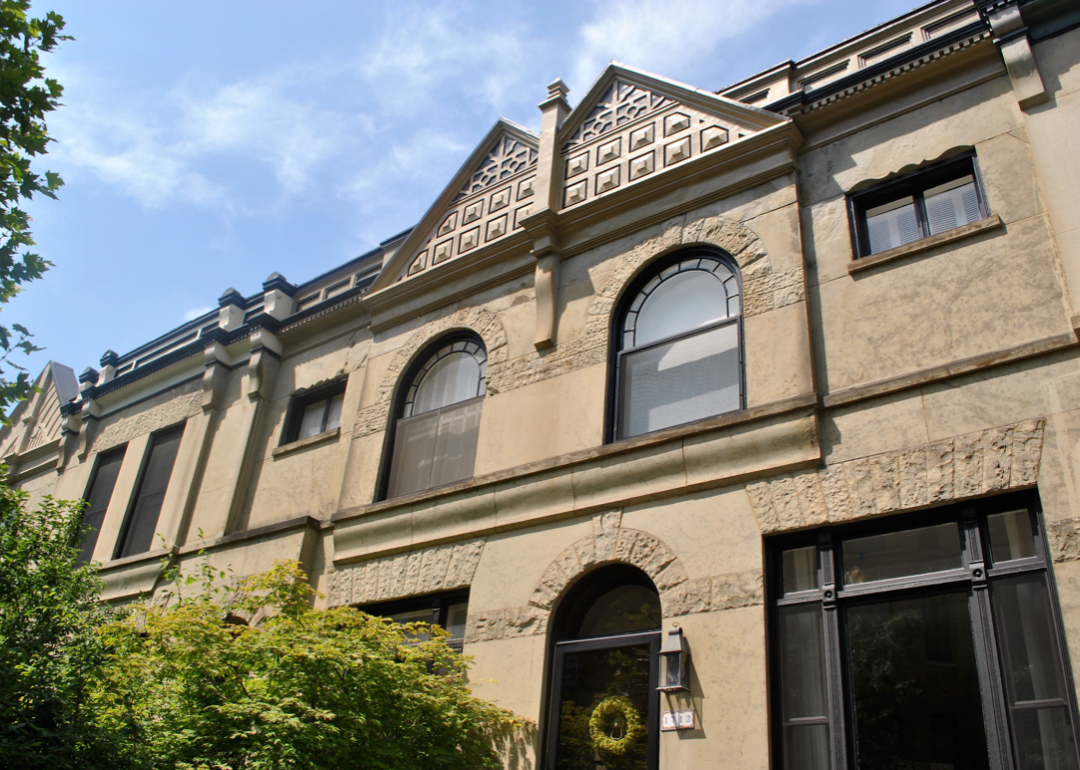
Elisa.rolle // Shutterstock
Illinois
Exterior view of Henry Gerber House in Chicago
The Henry Gerber House is the former residence of Henry Gerber, the founder of the Society for Human Rights, the first chartered organization explicitly advocating for LGBTQ+ rights
Located in Chicago, the Henry Gerber House served as the origin point for the Society for Human Rights, the nation’s first gay rights organization. In 1925, only one year after the Society’s founding, Henry Gerber and several other group members were arrested in the middle of the night on obscenity charges. Their belongings were also seized, and the arrests resulted in the demise of the Society. However, the importance of the Society for Human Rights far surpassed its one year of activity; the group is now seen as a precursor of the modern gay liberation movement. Today, the Henry Gerber House is a historic landmark.

Andrei_R // Shutterstock
Indiana
Doctor patient consultation
The Damien Center is Indiana’s oldest and largest AIDS-related service center and has become an important presence in Indianapolis’ LGBTQ+ community
Founded in 1987, the Damien Center brought care services and resources to those living with AIDS in Indiana. The center also served as a hub for the LGBTQ+ community in Indianapolis and the surrounding area, hosting youth group meetings and events and serving as a gay and lesbian resource switchboard. The Damien Center still operates today, offering various services to those living with HIV.

David Greedy // Getty Images
Iowa
People waving pride flags outside of Iowa Supreme Court
In 2007, Iowa added LGBTQ+ identities to its Civil Rights Act
Ahead of many other states, Iowa moved to prohibit discrimination based on sexual orientation and gender identity in 2007. While several states had already barred discrimination against gay people, only eight had done the same for gender identity. The state also legalized same-gender marriage in 2009, several years before the Supreme Court would do the same on a federal level. Despite this advance, three Iowa Supreme Court judges who voted to legalize gay marriage were recalled following an unprecedented conservative campaign to remove them the following year.
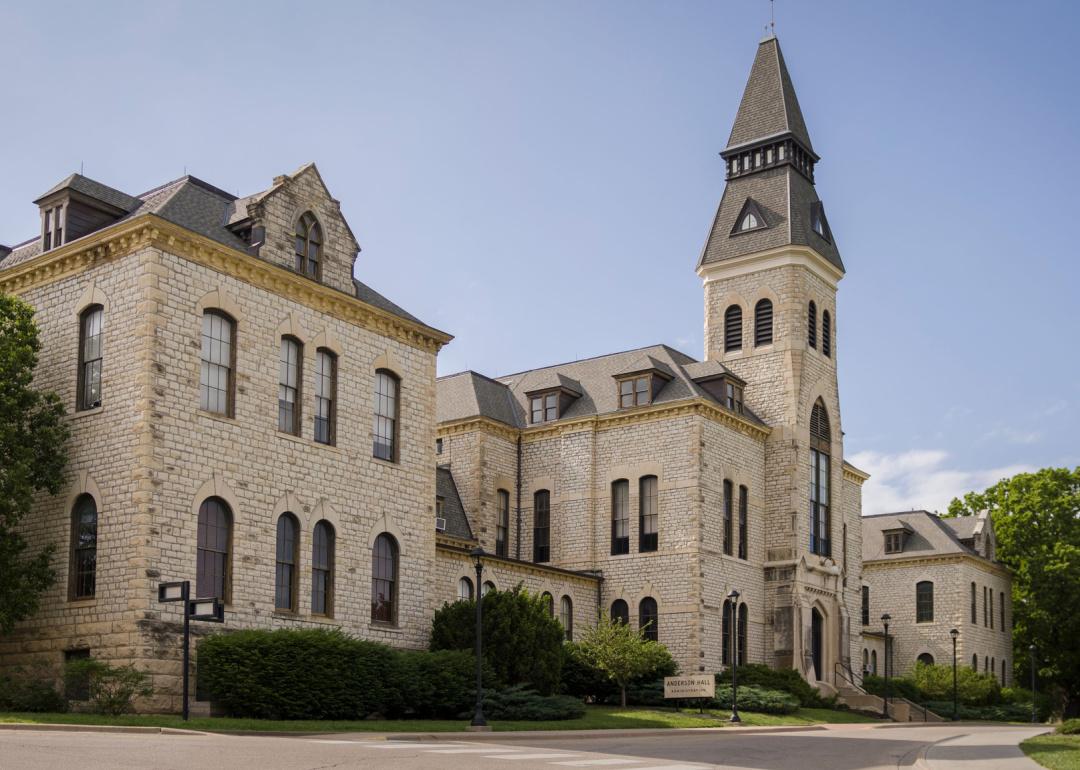
University of College // Shutterstock
Kansas
Kansas State University campus
The Lawrence Gay Liberation Front fought for formal recognition by the University of Kansas in the 1970s
One year after Stonewall, a group of students at the University of Kansas formed an LGBTQ+ organization but were refused recognition by the chancellor. The Lawrence Gay Liberation Front sued the university, embroiling them in a multi-year case that ended in a U.S. District Court ruling against them. Despite this loss, the organization continued to grow. They were formally recognized by the school a decade later.
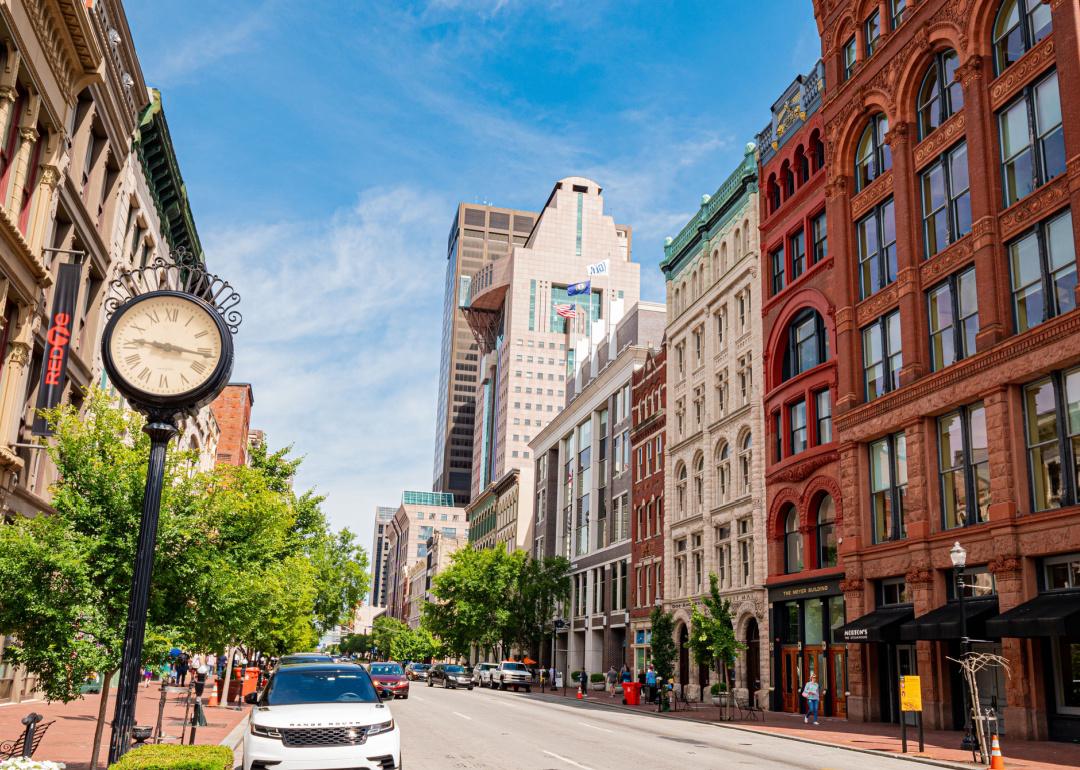
4kclips // Shutterstock
Kentucky
Downtown Louisville street view
Louisville’s historic “Whiskey Row” has been recognized for its LGBTQ+ past
The Whiskey Row area of Louisville’s Main Street is known for housing whiskey barrels in the mid-19th century. But in the 1970s and 1980s, the block was home to The Downtowner, a beloved gay bar. Also recognized was the Elks Athletic Club (formerly Beaux Arts Cocktail Lounge), Louisville’s first gay bar. Both buildings are on the historic register. A fire in 2015 destroyed several Whiskey Row buildings, but revitalization efforts restored some of the damage.
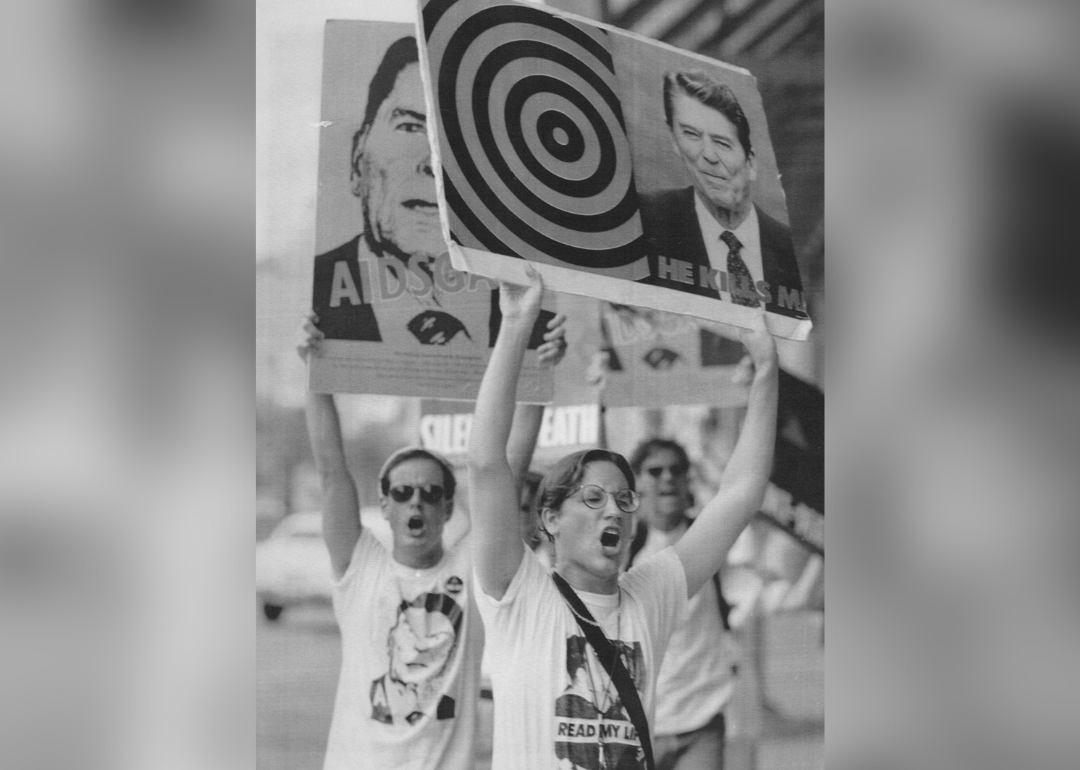
Jerry Cleveland/The Denver Post via Getty Images
Louisiana
Members of Act Up demonstrate outside the New Orleans convention Center
In 1988, the New Orleans chapter of ACT UP protested at the Republican National Convention
Founded in 1987, the AIDS Coalition to Unleash Power soon had chapters all over the country, including in New Orleans. The 1988 Republican National Convention was held in The Big Easy, an event that cost $800,000—about $2 million in 2022. Meanwhile, the state’s funding for the only FDA-approved AIDS treatment, AZT, was running out. ACT UP New Orleans protested at the convention, though conflict with New York members of ACT UP who had come in for the event hampered the group’s progress.
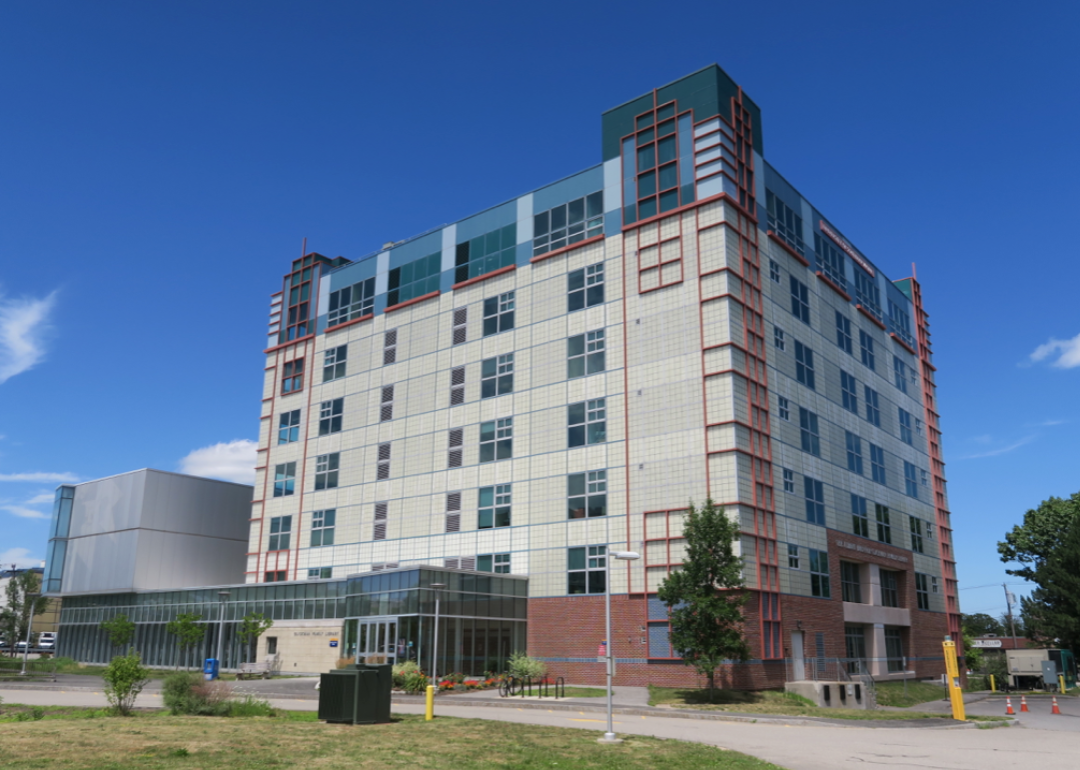
John Phelan // Wikimedia Commons
Maine
Albert Brenner Glickman Family Library
The University of Southern Maine has collected the largest archive of Maine LGBTQ+ historical artifacts
Housed in the special collections of the University of Southern Maine’s Glickman Library is a vast archive of objects documenting Maine’s LGBTQ+ history. Spanning several decades, the library’s artifacts include photographs, buttons, clothes, newspapers, pamphlets, and even an answering machine belonging to a rural gay hotline used by many isolated or lonely LGBTQ+ Mainers. Some of the collections can be accessed online here.
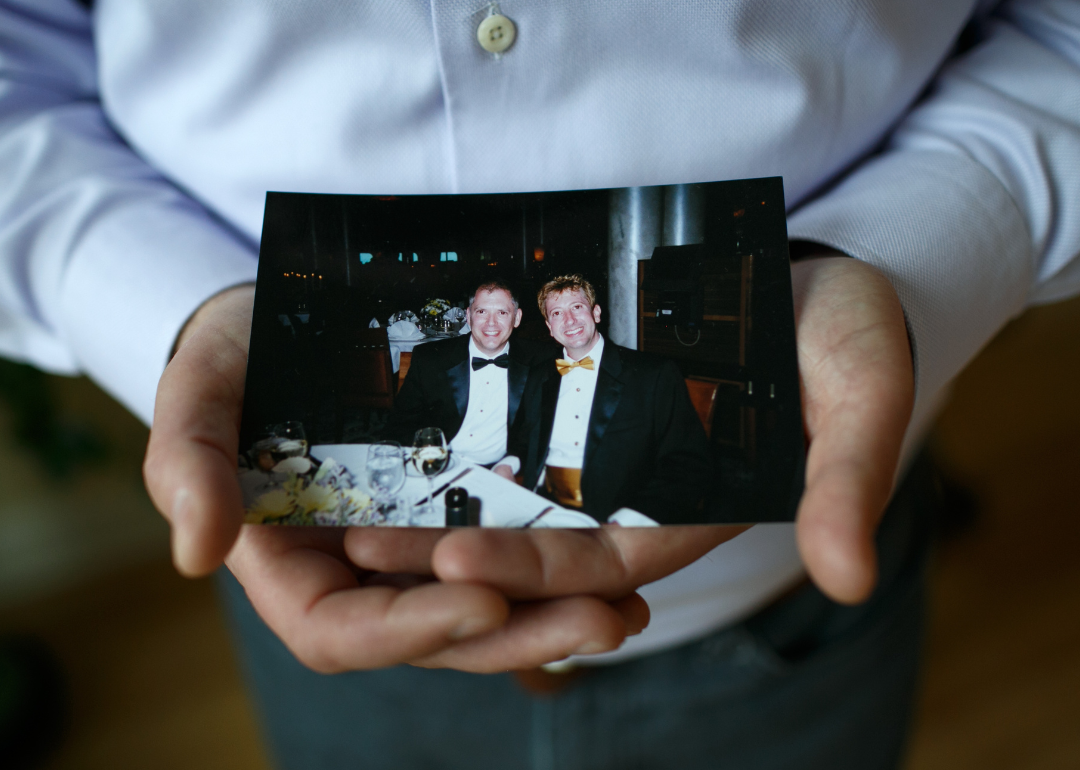
Maddie McGarvey/For The Washington Post via Getty Images
Maryland
Jim Obergefell holds a photo of him and his late husband John Arthur
James Obergefell and John Arthur were married on the tarmac of BWI airport, an event that would lead to the legalization of same-gender marriage in the U.S. in 2015
In 2013, James Obergefell and John Arthur flew on a medical jet from their home in Ohio to BWI airport in Baltimore, got married in the plane as it sat on the tarmac, and then flew home. At the time, gay marriage was illegal in Ohio but legal in Maryland, and Arthur could not leave the plane due to being in the late stages of ALS. Shortly before Arthur passed away, Obergefell filed a lawsuit with the help of a civil rights attorney so that Obergefell’s name could be listed on Arthur’s death certificate as his surviving spouse. Though they won the case, the state of Ohio appealed the decision, and eventually, Obergefell’s case ended up being heard by the Supreme Court.
The landmark decision in Obergefell v. Hodges legalized same-gender marriage at the federal level, a major civil rights victory for LGBTQ+ Americans.
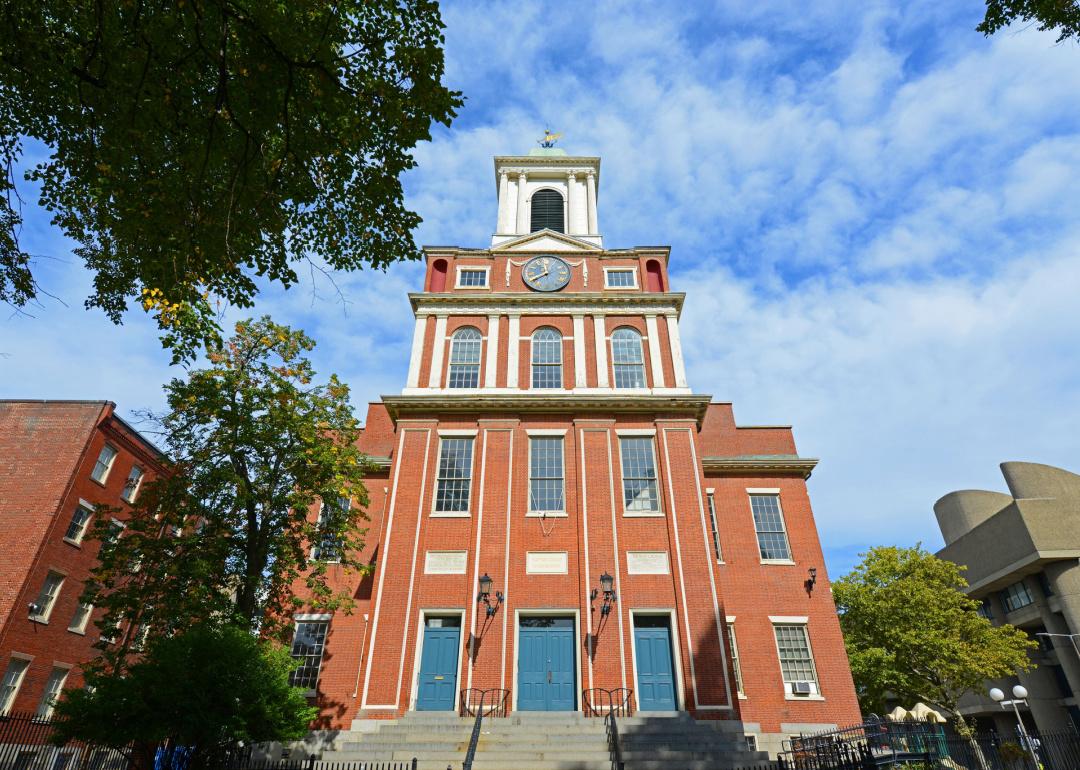
Wangkun Jia // Shutterstock
Massachusetts
Old West Church on Cambridge Street on Beacon Hill
Gay attorney John Ward and others founded the organization Gay and Lesbian Advocates and Defenders at Old West Church in Boston
In 1978, Gay and Lesbian Advocates and Defenders was founded in the basement of Old West Church by out gay lawyer John Ward and his colleagues. One of the first of its kind, GLAD explicitly provided civil rights legal services to members of the LGBTQ+ community. GLAD still provides these services today and has successfully argued numerous LGBTQ+ civil rights cases in front of some of the nation’s highest courts. GLAD attorney Mary L. Bonauto represented several same-gender couples whose claims were brought before the Supreme Court alongside Obergefell v. Hodges in 2015, helping to secure the federal right to gay marriage.
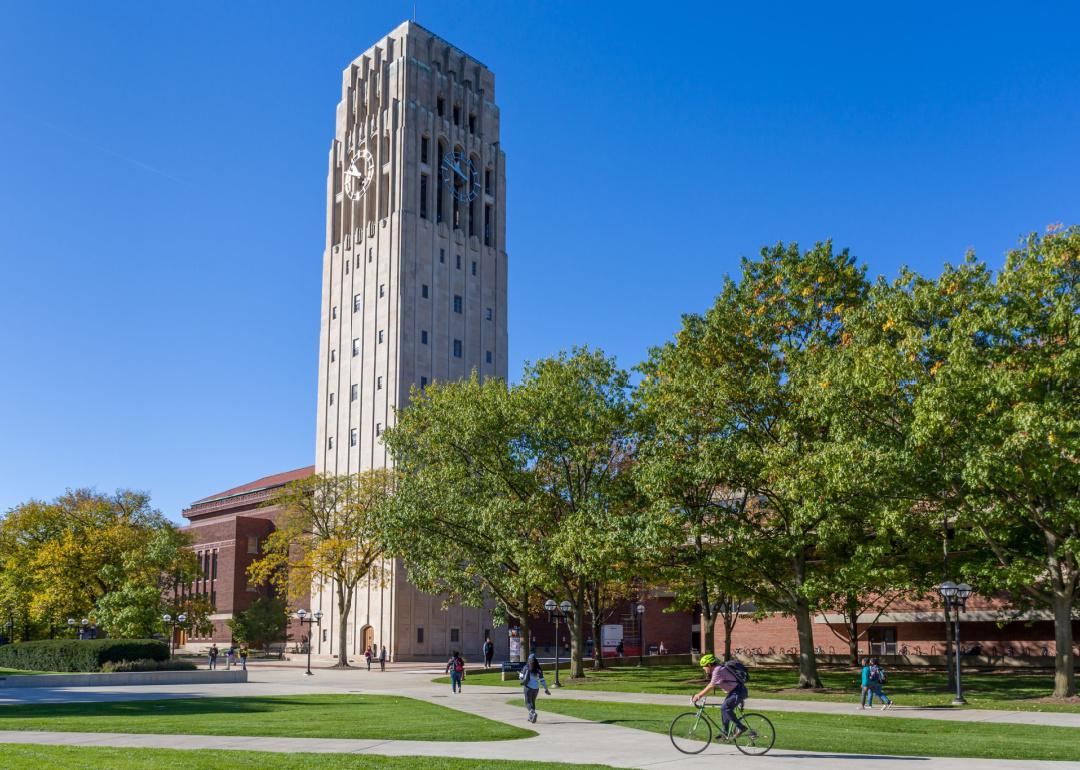
Ken Wolter // Shutterstock
Michigan
Tower on the campus of the University of Michigan.
The University of Michigan curates Michigan’s LGBT Heritage Exhibit, chronicling 100 years of LGBTQ+ history in the state
Initially created to commemorate Stonewall’s 30th anniversary, Michigan’s LGBT Heritage Exhibit was a physical exhibit displayed at the University of Michigan’s Harlan Hatcher Library in 1999. Today, it is a digitally preserved and publicly accessible archive of Michigan’s queer history and activism. With some images dated as early as 1860, the archive focuses mainly on the years between 1950 and 1990 and includes photographs, publications, and more.
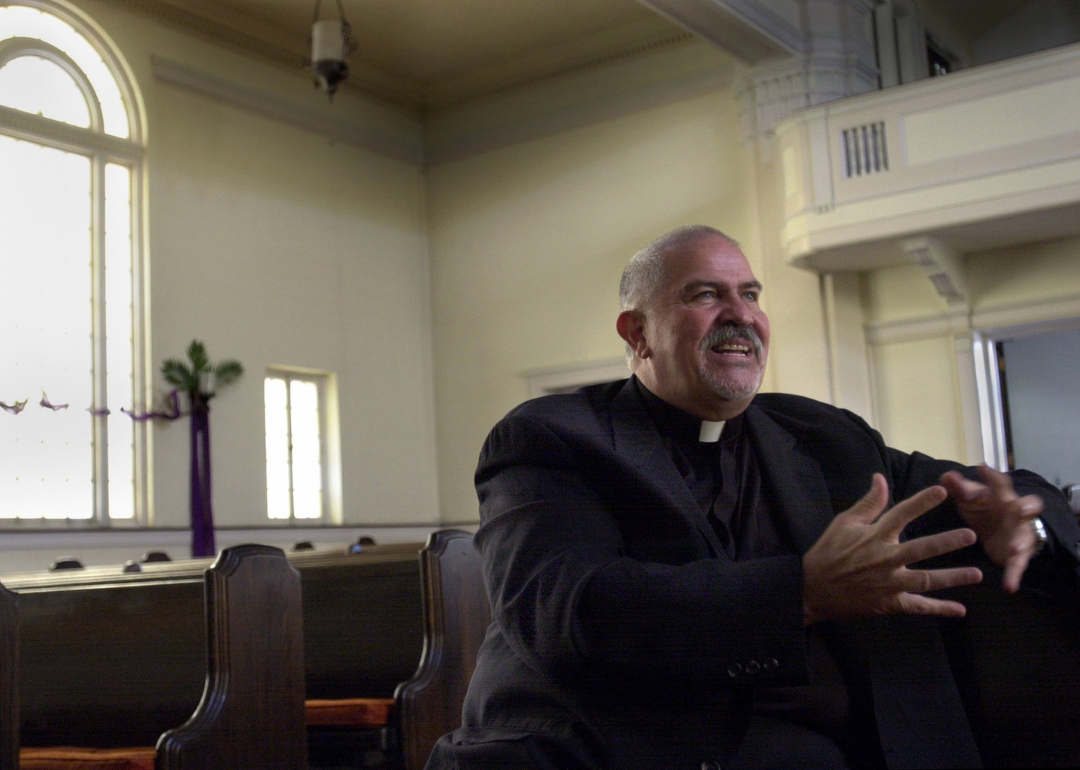
JOEY MCLEISTER/Star Tribune via Getty Images
Minnesota
Rev. Troy D. Perry in conversation at All God’s Children Metropolitan Community Church
The All God’s Children Metropolitan Community Church opened in Minneapolis in 1974 to provide a worship space that was welcoming and safe for the LGBTQ+ community
The All God’s Children Metropolitan Community Church emerged from the desire of several LGBTQ+ student groups in the Twin Cities for inclusive religious services. The 1970s saw more people than ever living as out LGBTQ+ community members, in large part due to Stonewall and the burgeoning gay liberation movement. This also meant more people getting thrown out of their churches or feeling unwelcome there. Two years after opening, All God’s Children was officially chartered in 1976 and has advocated for LGBTQ+ rights and inclusion ever since.
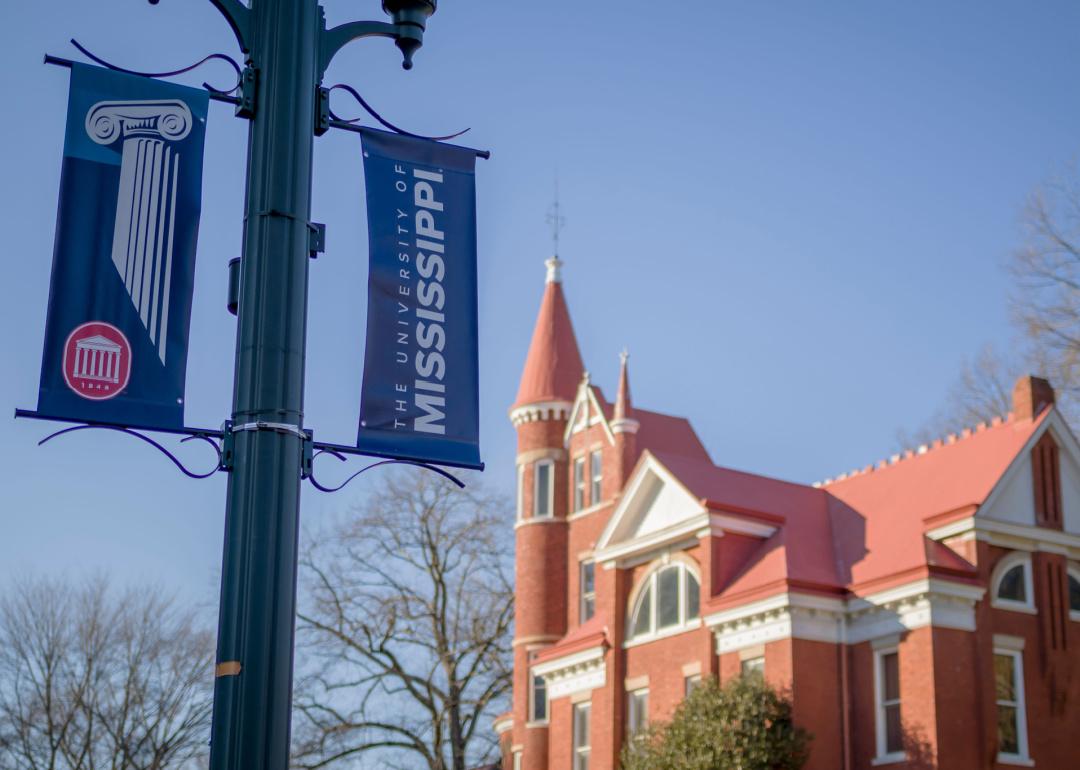
University of College // Shutterstock
Mississippi
University of Mississippi banner in front of campus building
The University of Mississippi has teamed up with the Invisible Histories Project to create the Queer Mississippi Oral History Project
The Invisible Histories Project is an organization that collects Southern LGBTQ+ history through archival documents and oral histories and creates resources that communities in Mississippi, Alabama, and Georgia can access. The Mississippi branch of the organization partnered with the University of Mississippi to create the Queer Mississippi Oral History Project, a series of interviews with LGBTQ+ Mississippians about their lives.
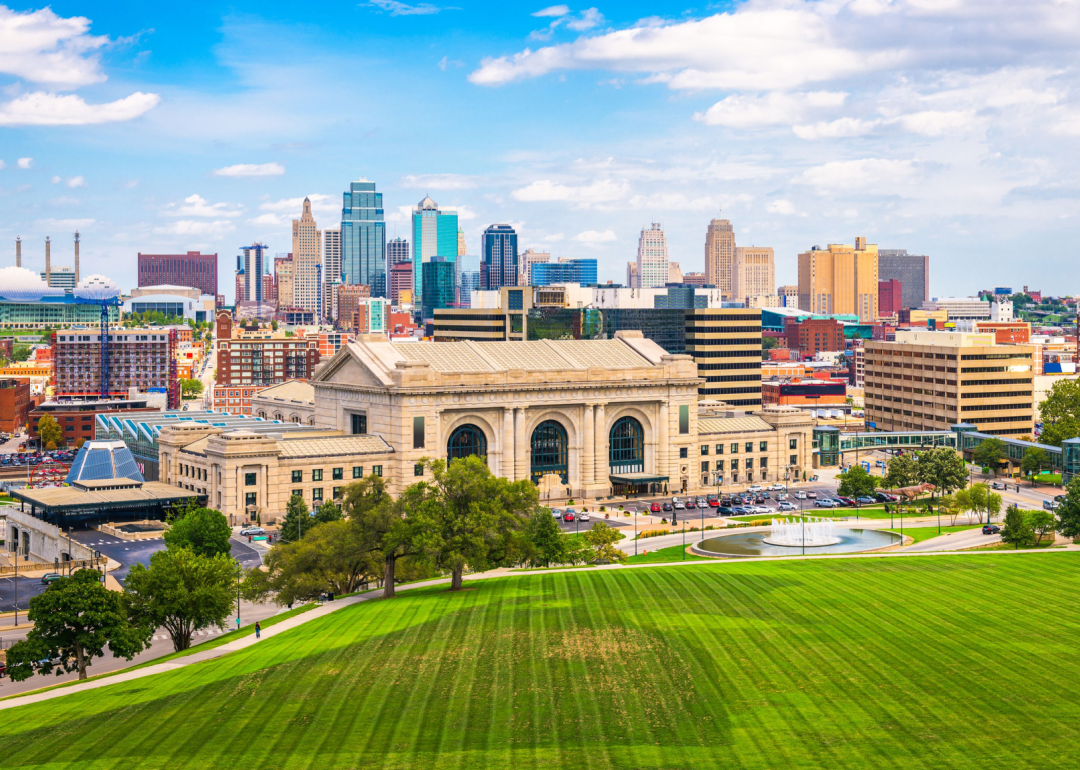
Sean Pavone // Shutterstock
Missouri
Cityscape of Kansas City Missouri
The first-ever gathering of national gay and lesbian rights leaders occurred in Kansas City in 1966
Three years before Stonewall, gay and lesbian rights leaders from all over the country convened in Kansas City for the National Planning Conference of Homophile Organizations. They collectively organized protests and created an LGBTQ+ legal defense fund. In Kansas City, more LGBTQ+ organizations and projects bloomed out of the conference, including the Phoenix Society for Individual Freedom, which published a magazine featuring the work of LGBTQ+ community members. They also established Phoenix House, a physical community center for queer people in Kansas City.
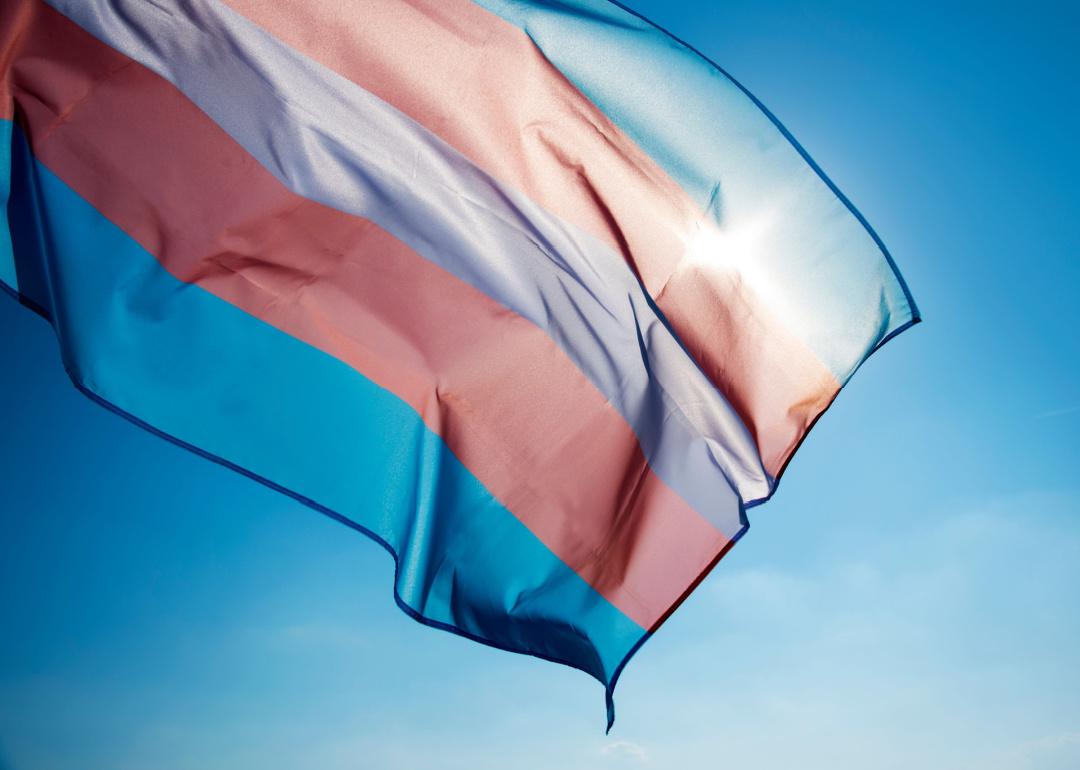
nito // Shutterstock
Montana
Transgender pride flag waving on blue sku
The landmark case Marquez v. State of Montana, which remains ongoing as of Oct. 2022, challenges the state’s requirements for transgender individuals to change the gender marker on their birth certificates
In 2021, several trans Montanans challenged a new law prohibiting transgender people from changing the gender marker on their birth certificates without offering proof of having had gender-affirming surgery. Before the law’s passage, Montanans could change the gender marker on their birth certificates by providing an affidavit. In September 2022, a state judge blocked the law from going into effect while its constitutionality was being challenged, allowing the previous rules around affidavits to go back into effect.
You may also like: 50 terms with origins in rural America
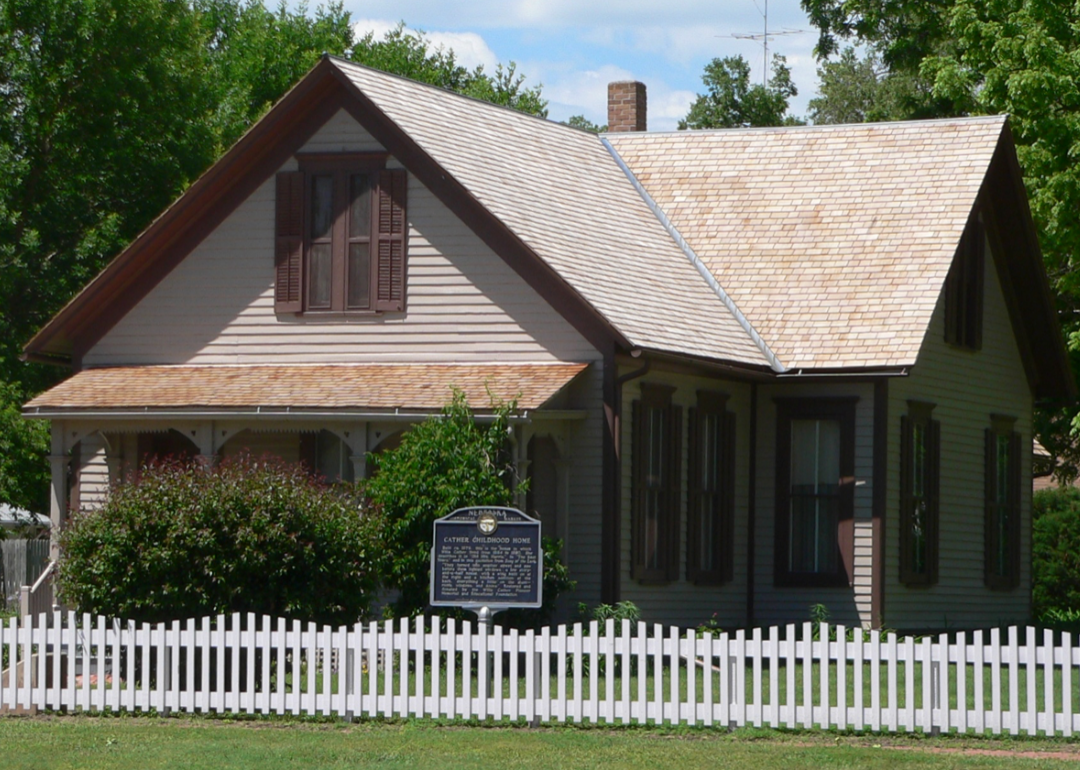
Ammodramus // Wikimedia Commons
Nebraska
Willa Cather house in Red Cloud Nebraska
Pulitzer Prize-winning author Willa Cather’s childhood home is located in Red Cloud
Although Willa Cather did not identify as a lesbian in her life, revelations after her death about her relationship with Edith Lewis, her partner of nearly 40 years, have convinced many scholars of her romantic attraction to women. Cather grew up in Red Cloud, and many of her stories, which focused on frontier life, were inspired by her upbringing there. Today, the Willa Cather House is a historic landmark and remains mostly preserved as it was in the late 1800s.
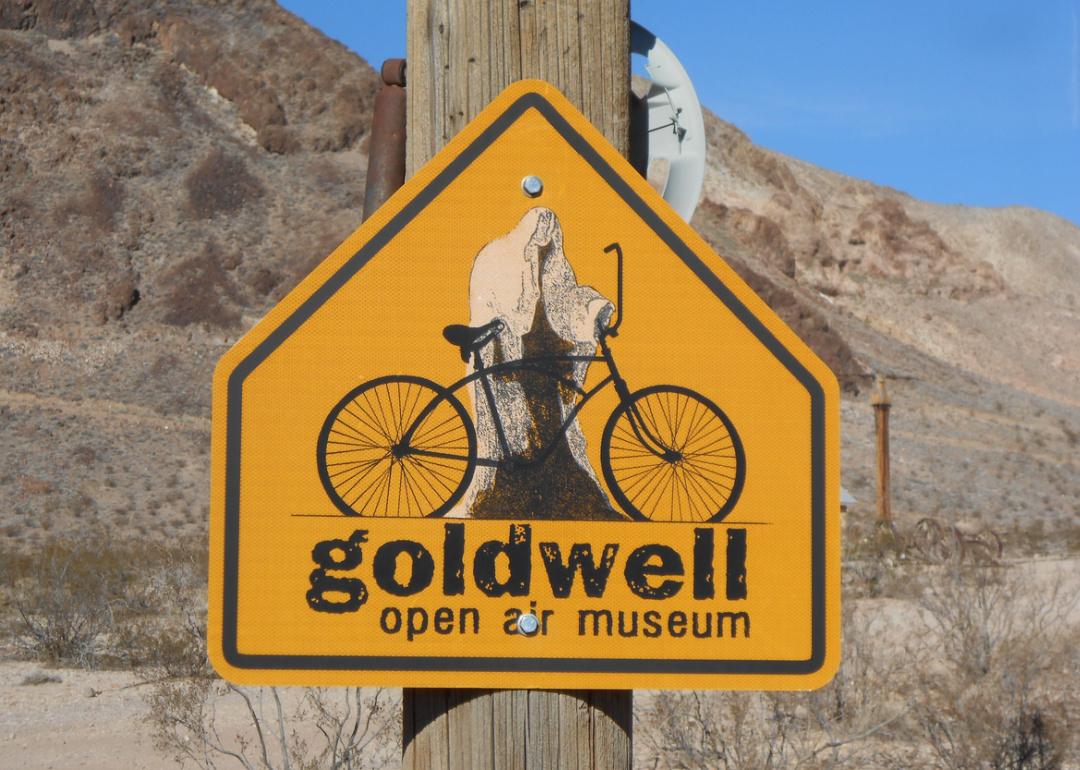
alarico // Shutterstock
Nevada
Sign for The Goldwell Open Air Museum in Rhyolite
“Memorial for Queer Rhyolite,” a monument at the Goldwell Open Air Museum, commemorates the attempt to establish a utopian LGBTQ+ community called Stonewall Park
In the 1980s, at the height of the AIDS crisis, a group of LGBTQ+ people tried to create a queer utopia in the abandoned mining town of Rhyolite. The goal for the community, which was to be called Stonewall Park, was to live freely and openly without fear of discrimination. Still, surrounding communities protested their presence there, and eventually, they gave up. To honor the dream of Stonewall Park, sculpture artist Emily Budd created the “Memorial for Queer Rhyolite” at the Goldwell Open Air Museum.
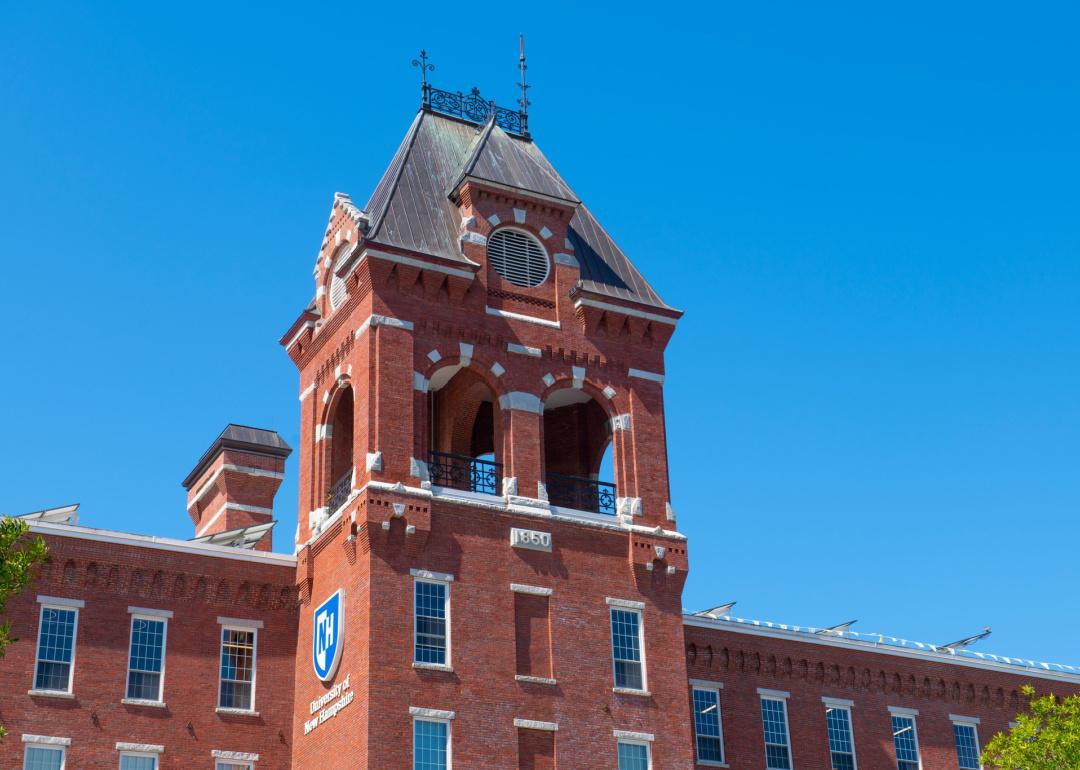
Wangkun Jia // Shutterstock
New Hampshire
Building on the University of New Hampshire campus
In 1974, the Gay Student Organization at the University of New Hampshire won a lawsuit against the university and the state
After then-Gov. Meldrim Thomson Jr. tried to prevent the University of New Hampshire’s Gay Student Organization from holding social events, the GSO sued the state and the university. Thomson was known for his ultraconservative political leanings, which included suggesting the National Guard should be equipped with nuclear weapons and publicly calling Martin Luther King Jr. “a man of immoral character.” Ultimately, the case ended up in the New Hampshire Supreme Court, which ruled in favor of the GSO.

Carol M. Highmith // Library of Congress
New Jersey
The tomb of American poet, essayist, and journalist Walt Whitman, in Camden, New Jersey
Walt Whitman is buried at Harleigh Cemetery in Camden
One of America’s most beloved poets, Walt Whitman was born on Long Island, New York, but lived the end of his life in Camden, where he owned a house. Many critics and scholars have speculated about Whitman’s sexuality, with some arguing he might have been gay or bisexual. While it’s impossible to say for sure, homoeroticism and sensuality in his poetry, particularly in “Leaves of Grass,” have led to him being embraced as a queer poet in many circles. Whitman’s house in Camden is now a historic site, and he is buried at nearby Harleigh Cemetery.

Grindstone Media Group // Shutterstock
New Mexico
Veterans memorial with American flag
New Mexico Veterans Memorial Park is the home of Silent No More, a memorial to LGBTQ+ veterans and soldiers
In 2011, Congress voted to repeal the policy known as “don’t ask, don’t tell,” a measure passed in 1994 by the Clinton administration banning out gay Americans from serving in the U.S. military and forcing closeted LGBTQ+ service members to stay in the closet while serving. In 2014, after “don’t ask, don’t tell” was repealed, Armed Veterans for Equal Rights and the New Mexico Veterans Memorial Park unveiled a monument in honor of the many LGBTQ+ service members whose time in the military was marked by the threat of being discharged or discriminated against should their sexuality become public.
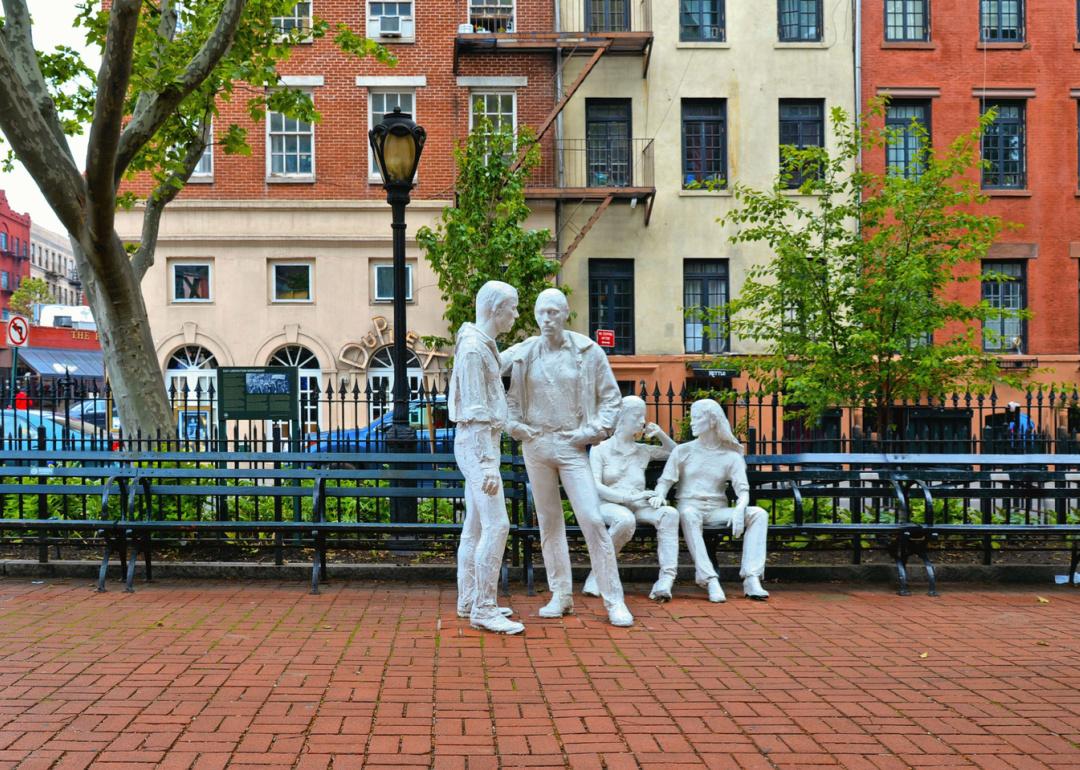
poludziber // Shutterstock
New York
Christopher Park sculptures in Greenwich Village New York
The National Monument to Gay Liberation was erected near the Stonewall Inn in 1992
In New York City’s Greenwich Village in June 1969, police raided the Stonewall Inn, a popular gay club, and, using violent tactics, began arresting LGBTQ+ patrons. Many other patrons at Stonewall and neighboring gay bars responded by fighting back. Organized protests, as well as a march, continued over the following weeks. These events are credited with kicking off the gay liberation movement and were a milestone in pushing to shift cultural views around queer visibility.
Stonewall has since been designated a National Monument, and a sculpture installation by George Segal was unveiled in 1992 in Christopher Park, across the street from the Stonewall Inn. The sculptures, which depict two white men standing and talking, and two white women sitting together on a bench, have been criticized for whitewashing the events of Stonewall, which were primarily led by gender-nonconforming people of color fighting back against police.
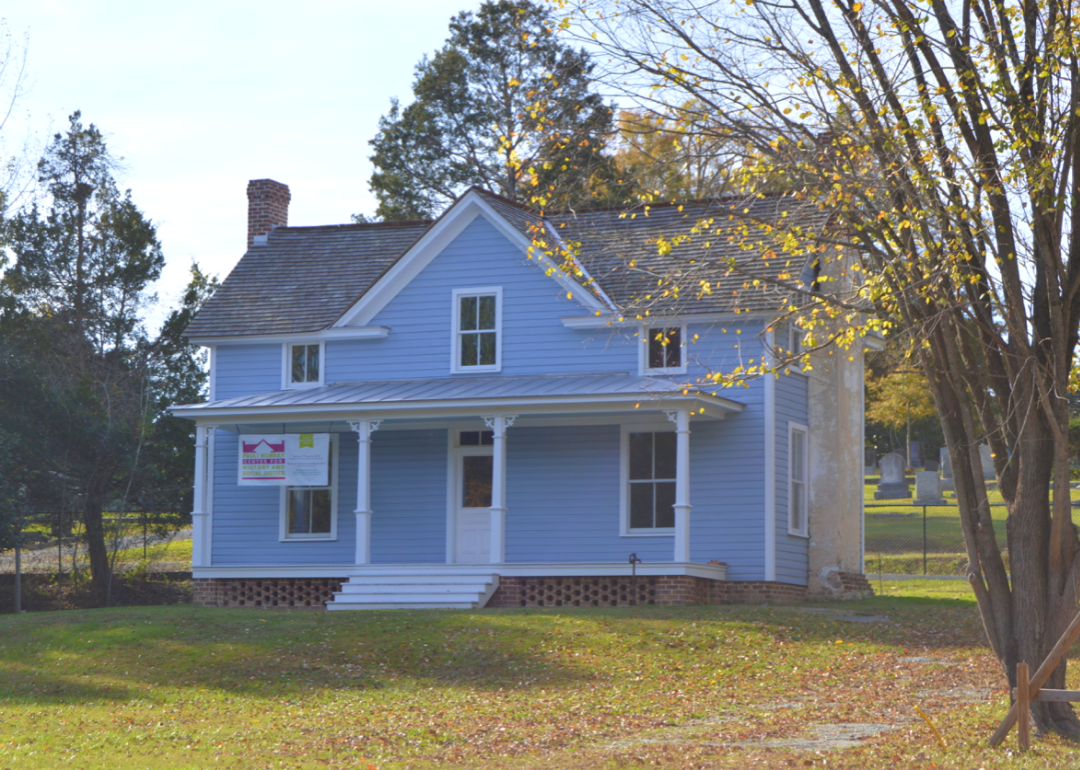
Nyttend // Wikimedia Commons
North Carolina
Pauli Murray Family Home
The Pauli Murray House is the childhood residence of the Black queer activist, lawyer, and priest
Pauli Murray was a pioneering activist and lawyer in the civil rights, women’s rights, and LGBTQ+ rights spaces. Murray co-founded the National Organization for Women alongside Betty Freidan, wrote a book on civil rights litigation that Thurgood Marshall called the “Bible” on the topic, and was the first Black femme-perceived person to become an Episcopal priest. They were also the first Black person to receive a JSD degree from Yale Law School, the most advanced degree.
Murray’s relationship with gender and sexuality was constantly evolving, and there was minimal language—as well as rights and protections—for gender-fluid people at the time. However, Murray’s correspondences and personal accounts note that they requested and were denied testosterone hormone therapy and identified as more masculine and more feminine at different points throughout their life. The Pauli Murray House is located in Durham and is dedicated to preserving their life and legacy.
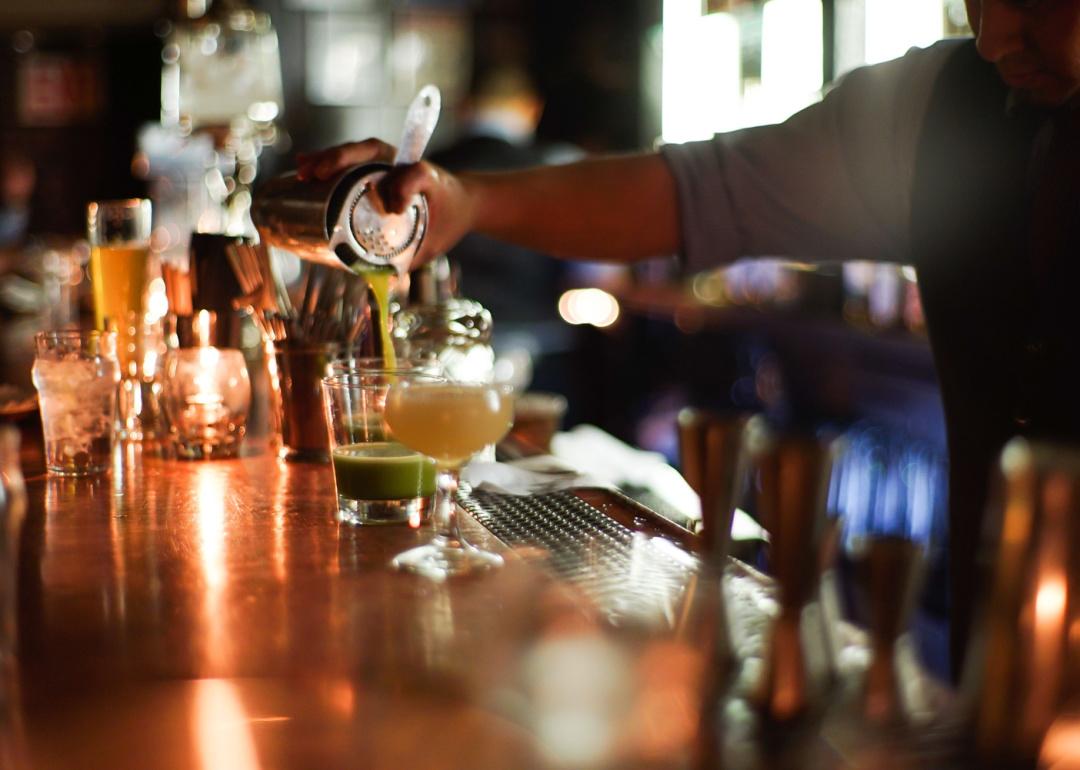
Thitinun Lerdkijsakul // Shutterstock
North Dakota
Bartender pouring drinks in bar
During a few months in 2016, the only gay bar in North Dakota, Heartbreakers, both opened and closed
As the state with the smallest LGBTQ+ population in the nation—just 2.7%, according to the Williams Institute—many queer North Dakotans experience a sense of isolation. It made news, therefore, when Heartbreakers, a former strip club in Williston, opened its doors in 2016 as the only gay bar in the state. The bar’s stint as an LGBTQ+ space didn’t last long; shortly after, the bar rebranded again after deciding “against catering to any specific demographic” and ousting the manager who was spearheading the gay bar vision. The bar is now permanently closed.
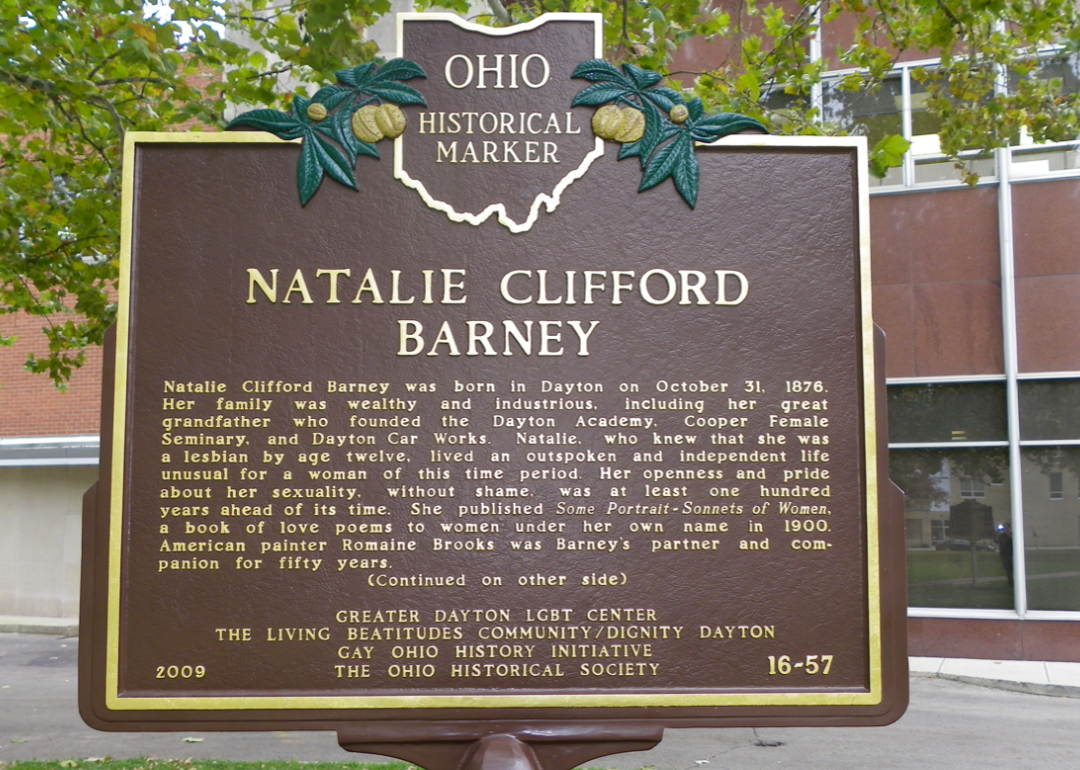
Zeist85 // Wikimedia Commons
Ohio
Barney historical marker in Cooper Park
The Natalie Clifford Barney Historic Marker commemorates the life of the lesbian poet and Ohio native
Born in Dayton in 1876, the poet Natalie Clifford Barney lived a life that was ahead of her time. She lived as an out lesbian from age 12 and was one of the first openly queer women to publish homoerotic poems about women under her own name. She moved to Paris at a young age and hosted literary salons out of her home, with a rotating array of famous artists and writers, including Gertrude Stein, Colette, F. Scott Fitzgerald, T.S. Eliot, and Isadora Duncan. Barney was also known for her high-profile lesbian relationships and famously rejected monogamy. Her affairs inspired Radclyffe Hall’s famous lesbian novel “The Well of Loneliness” and other works. A historical marker in Dayton preserves her legacy as a queer Ohioan.
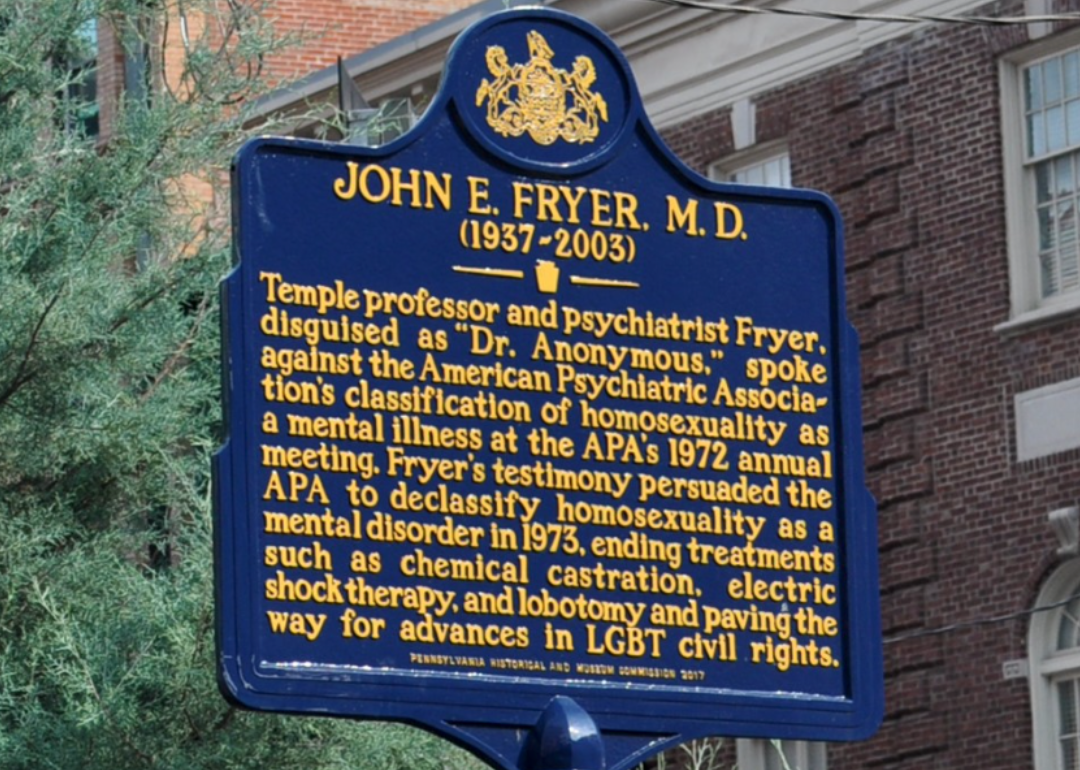
Sean Pavone // Shutterstock
Oklahoma
Aerial view of Oklahoma City skyline
The 39th St. District in Oklahoma City has become known as a gayborhood and hosts extensive Pride events annually
The 39th St. District in Oklahoma City became an LGBTQ+ hub in the late 1980s after lawsuits against the Oklahoma City police for discrimination ended in an agreement by police to not harass businesses and patrons in the neighborhood. Businesses began to thrive, and queer bars, restaurants, and stores cropped up more and more in the area, solidifying the district’s reputation as a “gayborhood.” Since then, the 39th St. District has hosted the city’s Pride festivities and serves as a queer-friendly hub for Oklahoma residents and members of the LGBTQ+ community from surrounding states.
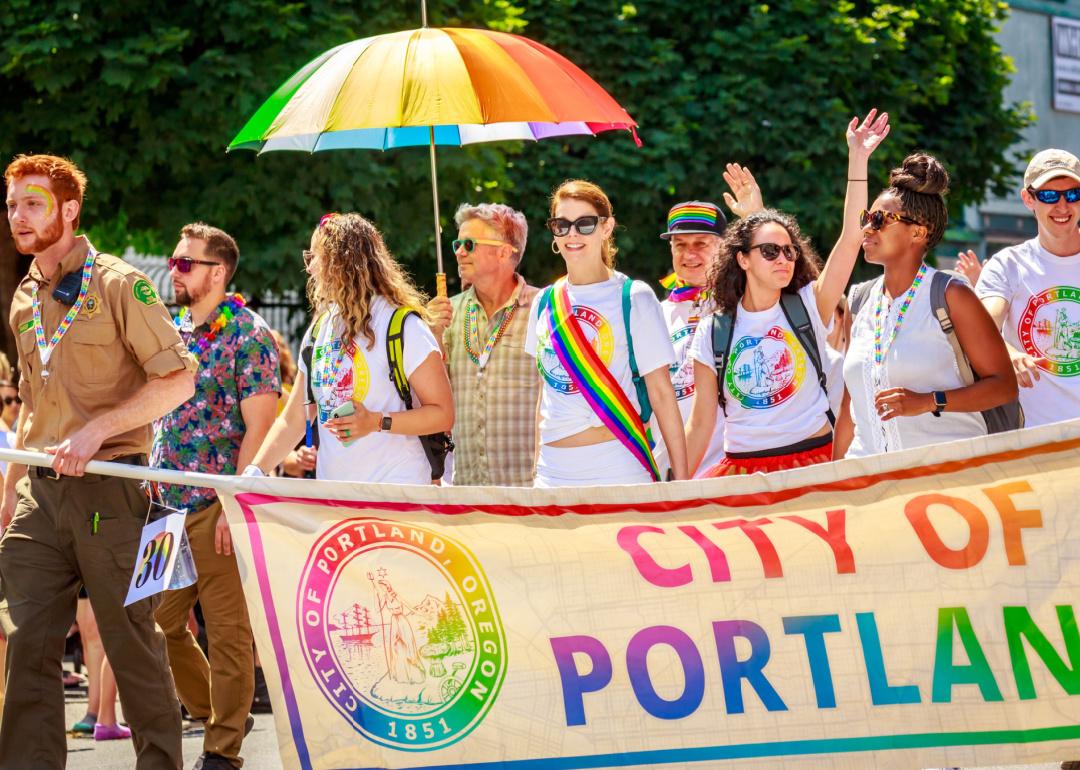
Png Studio Photography // Shutterstock
Oregon
group of people walking with banner Portland’s pride parade
“Never Look Away” is a mural in Portland commemorating the challenges and successes of Portland’s LGBTQ+ community
The first LGBTQ+ mural in Portland, “Never Look Away” honors eight queer pioneers who fought for LGBTQ+ rights and visibility both in Portland and throughout the U.S. Featured in the mural are Marsha P. Johnson, Rupert Kinnard, David Martinez, Kathleen Saadat, Lynn Nakamoto, Angelica Ross, Aydian Dowling, and Asa Wright. The mural took five years to put together and was officially revealed on Aug. 20, 2021. That date is now known as Never Look Away Day in Portland.
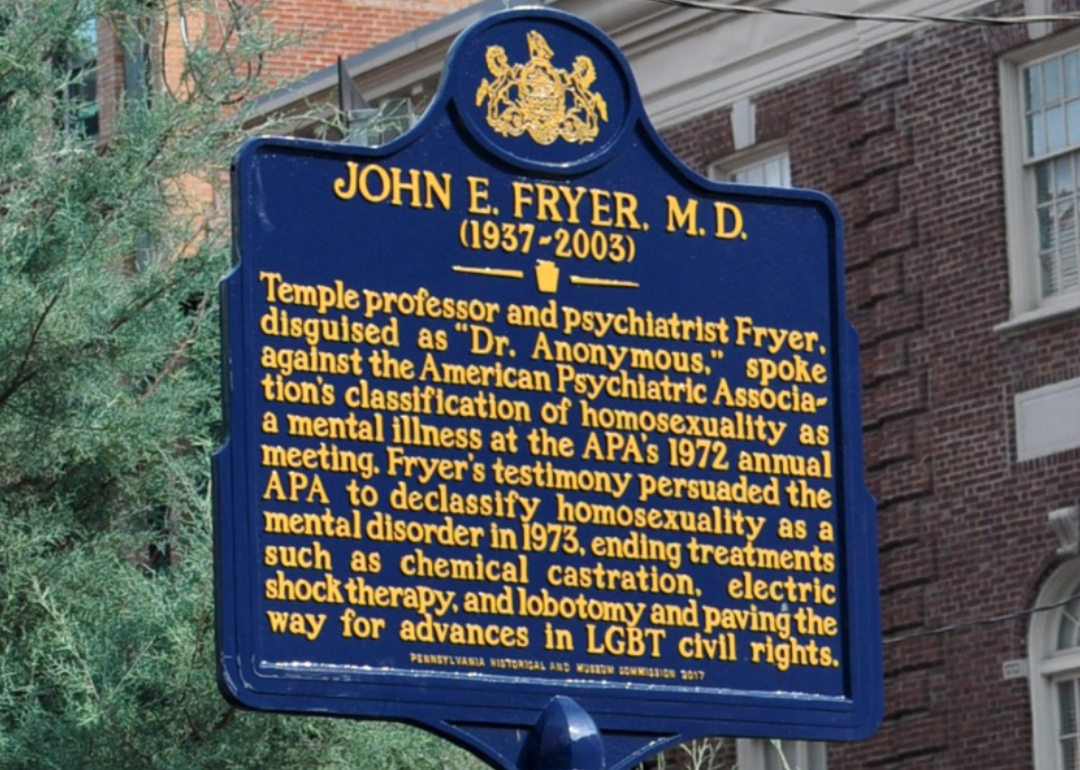
NMGiovannucci // Wikimedia Commons
Pennsylvania
John E Fryer MD Historical Marker
Dr. John Fryer, an early advocate against diagnosing homosexuality as a mental illness, was commemorated with a historical marker in Philadelphia
Until 1973, homosexuality was classified as a mental illness by the American Psychiatric Association and its Diagnostic and Statistical Manual. This classification led those “suffering from” homosexuality to be treated with electroshock therapy, chemical castration, and lobotomy. In 1972, gay Temple University professor and psychiatrist Dr. John Fryer disguised himself with a wig, mask, and voice modulator to take a stand in front of the APA. Under the name Dr. Henry Anonymous, he convinced a panel that homosexuality should be declassified as a mental illness, a change which took effect the very next year.
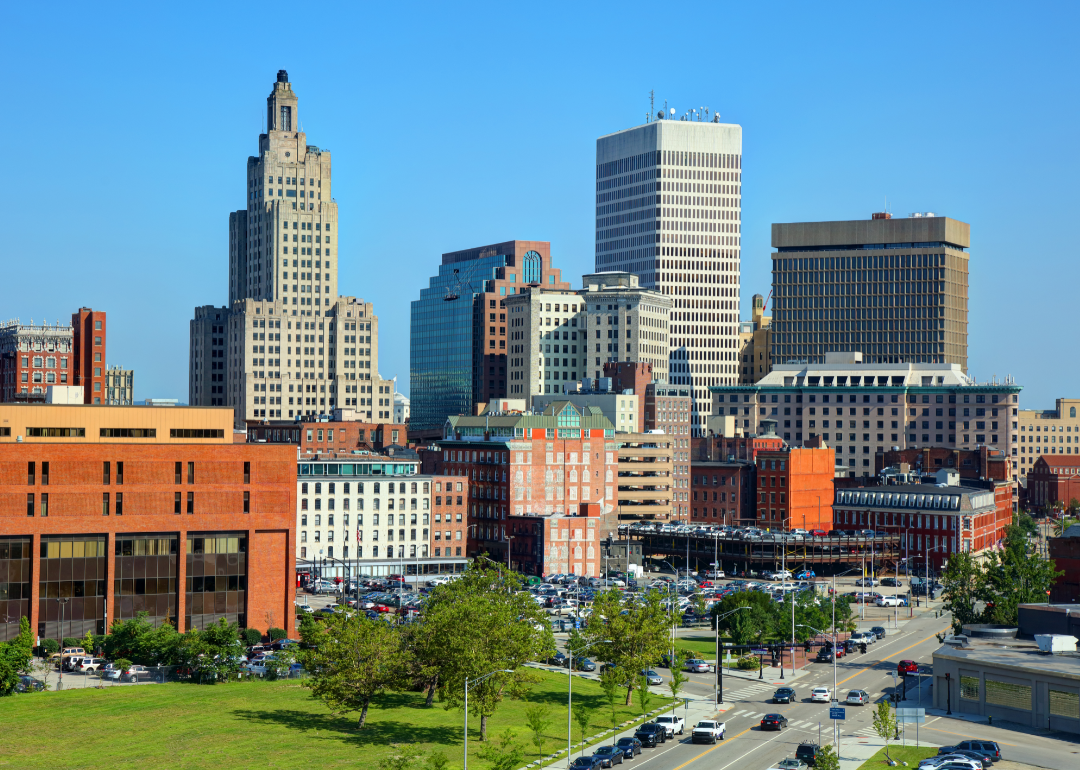
Canva
Rhode Island
Cityscape of Providence Rhode Island
The Mirabar is the oldest gay bar in the state
Opening its doors in 1947, the Mirabar was a refuge for gay Rhode Islanders originally located in Woonsocket. The bar moved locations over the decades and, at one point, had an alert system in the dance area in case of police raids. The club’s legacy continues with the Mirabar in Providence, where members of the LGBTQ+ community still go to dance, socialize, and do karaoke.
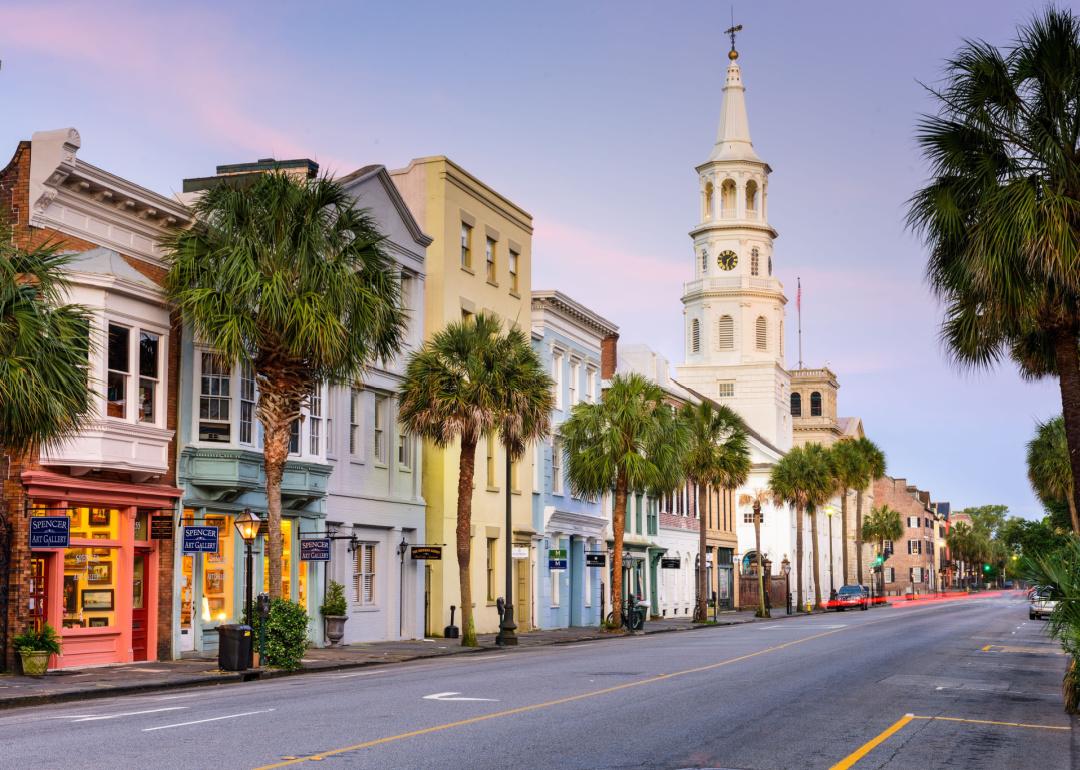
Sean Pavone // Shutterstock
South Carolina
Shops line Broad street in the French Quarter
The LGBTQ Columbia History Initiative features oral histories and a map of queer organizations and businesses
The University of South Carolina and Historic Columbia collaborated to create the LGBTQ Columbia History Initiative. The project has documented stories from many queer Columbia residents and includes an interactive map of LGBTQ+ events, businesses, and organizations from the 1950s to the present day.

Jon Platek // Wikimedia Commons
South Dakota
Main Street in Brookings, South Dakota
The city of Brookings passed the first comprehensive anti-discrimination legislation in South Dakota that protects people in the LGBTQ+ community
In 2017, the city of Brookings made South Dakota state history by moving to pass nondiscrimination protections for members of the LGBTQ+ community. The measure protects queer residents from housing, employment, and public accommodations discrimination, a move that contrasts the state’s continued lack of such protections.
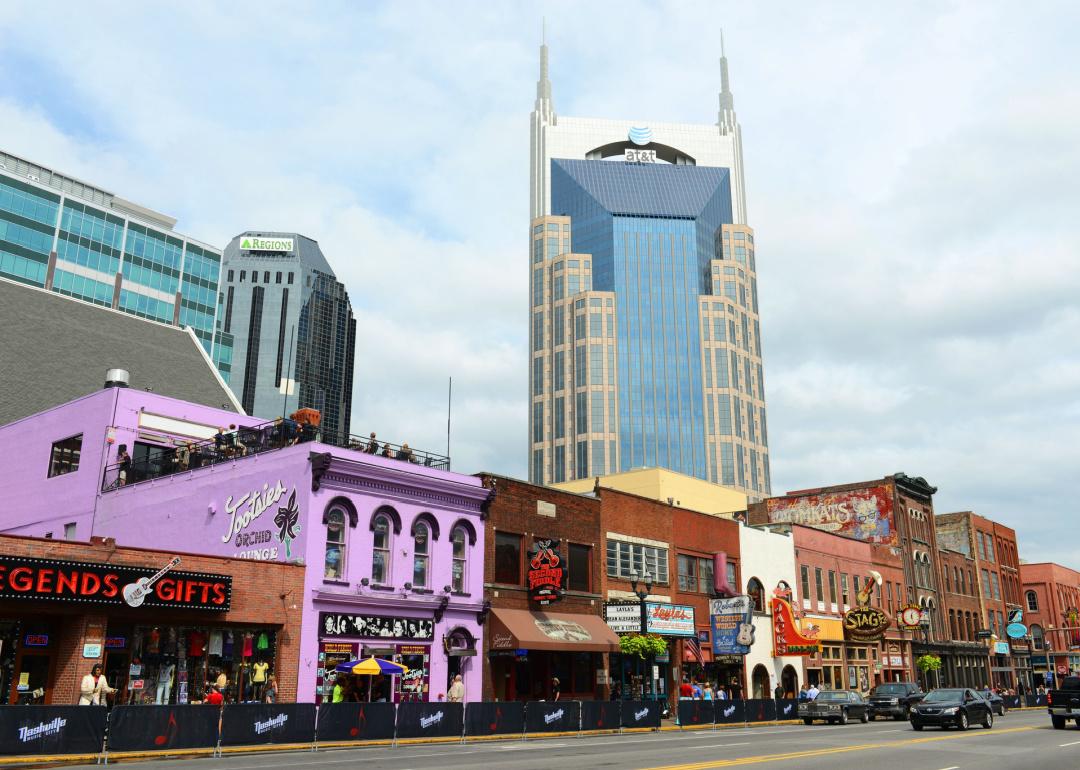
Wangkun Jia // Shutterstock
Tennessee
Downtown Nashville Tennessee cityscape
The Jungle and Juanita’s Historic Marker commemorates the first gay bars in Nashville
Opening in 1952 and 1956, The Jungle and Juanita’s Place were Nashville’s first two gay bars, located right next door to each other on Commerce Street. The two bars offered (mostly) safe spaces for gay men to commune, though they were the frequent targets of police raids. The two owners of the bars, who were straight, defended their patrons. Juanita Brazier, the owner of Juanita’s, even bailed some patrons out of jail if they were arrested at her bar. Both businesses were lost in 1983 when the block was demolished, but a historical marker preserves the history of the two bars.
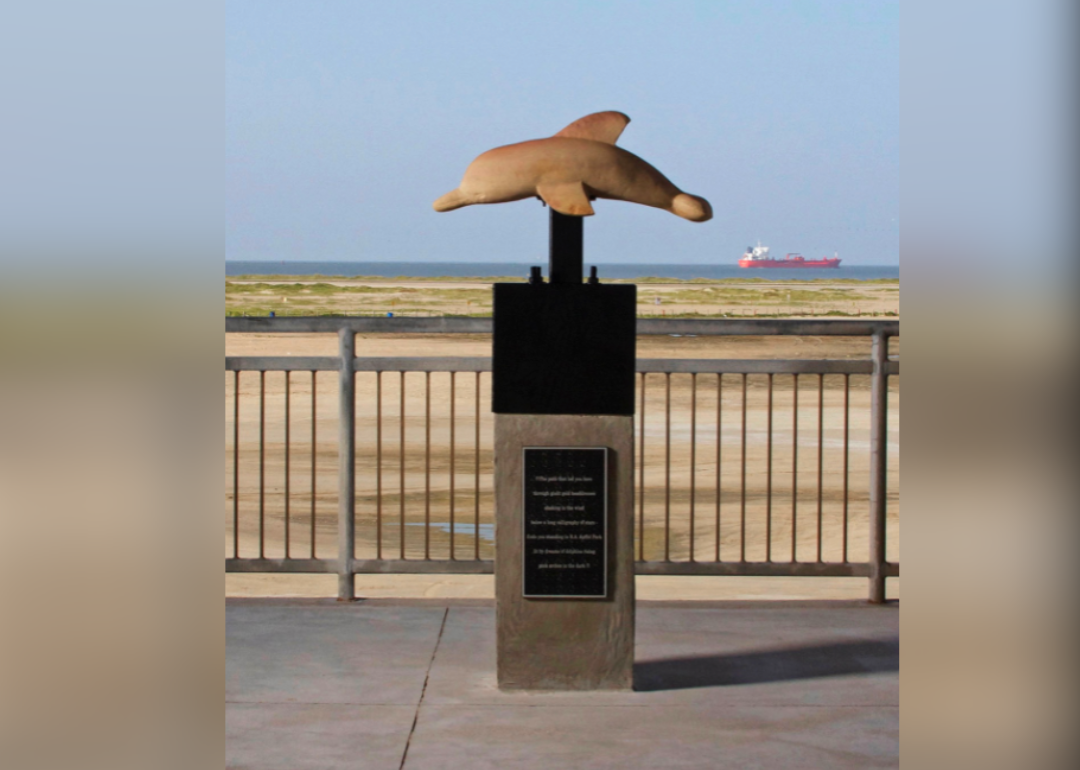
Joe Joe Orangias // Wikimedia Commons
Texas
Pink Dolphin Monument in Galveston Texas
The Pink Dolphin Monument was created by an artist, a writer, and a scientist as a testament to marginalized genders and sexualities
Located on Galveston Island, the Pink Dolphin Monument is the first monument to honor the LGBTQ+ community in the Southern U.S. Unveiled in 2014, the monument features a dolphin made of locally quarried red sandstone, which is perched on top of a pedestal. The dolphin pays tribute to the now-shuttered Pink Dolphin Tavern, a beloved gay bar in Galveston, and the Pink Posse, an LGBTQ+ activist group.
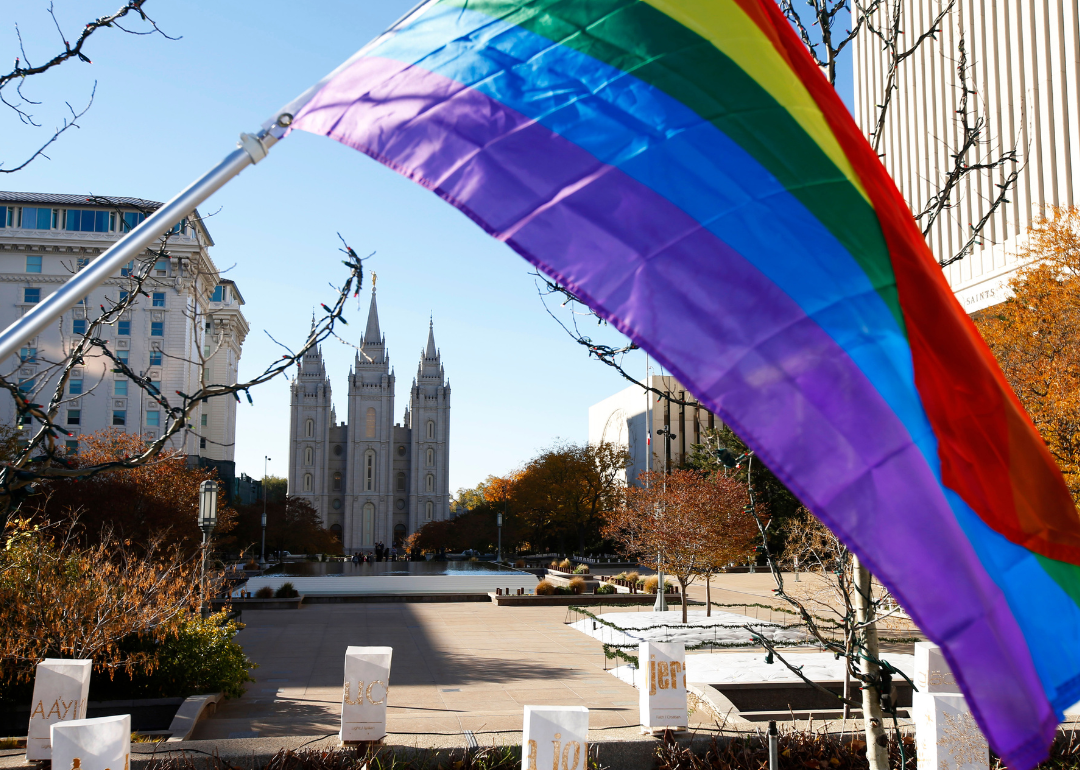
George Frey // Getty Images
Utah
A pride flag flies in front of the Historic Mormon Temple in Salt Lake City Utah
Laziz Kitchen is an LGBTQ+-owned restaurant in Salt Lake City
Offering Lebanese food and a welcoming atmosphere for all, Laziz Kitchen is co-owned by Moudi Sbeity, a queer chef who grew up between Texas and Lebanon, and Derek Kitchen, a Utah state senator. The two have long been involved in fighting for LGBTQ+ rights and legally challenged Utah’s ban on gay marriage. Their combined efforts have helped other cases gain traction, eventually leading to the Supreme Court’s decision in Obergefell v. Hodges in 2015. Now, they build queer community by offering a safe space for everyone to enjoy good food.

Courtesy of Stacker
Vermont
“First Vermont lesbian and gay pride parade” historic marker in downtown Burlington
The Burlington Pride Parade Marker was erected in City Hall Park in 2022 to commemorate the first Vermont-based Pride parade
Vermont’s first Pride parade was held in Burlington in 1983. Before that celebration, LGBTQ+ Vermonters celebrated and communed more discreetly, frequenting places like Andrews Inn. The state has long been at the forefront of LGBTQ+ rights and protections and was the first to legalize same-gender civil unions in 2009. Vermont’s first Pride celebration is remembered with a marker in Burlington.

Canva
Virginia
Colorful lights on theater stage
The Richmond Triangle Players are a performing arts group and theater that focuses on producing art grounded in the LGBTQ+ experience
Founded in 1993, the Richmond Triangle Players are a theater group by and for the LGBTQ+ community in Virginia. In 2020, the RTP launched the So.Queer Playwriting Festival, in which playwrights can submit their works for the chance to get a play developed with the help of the theater group and local mentors.
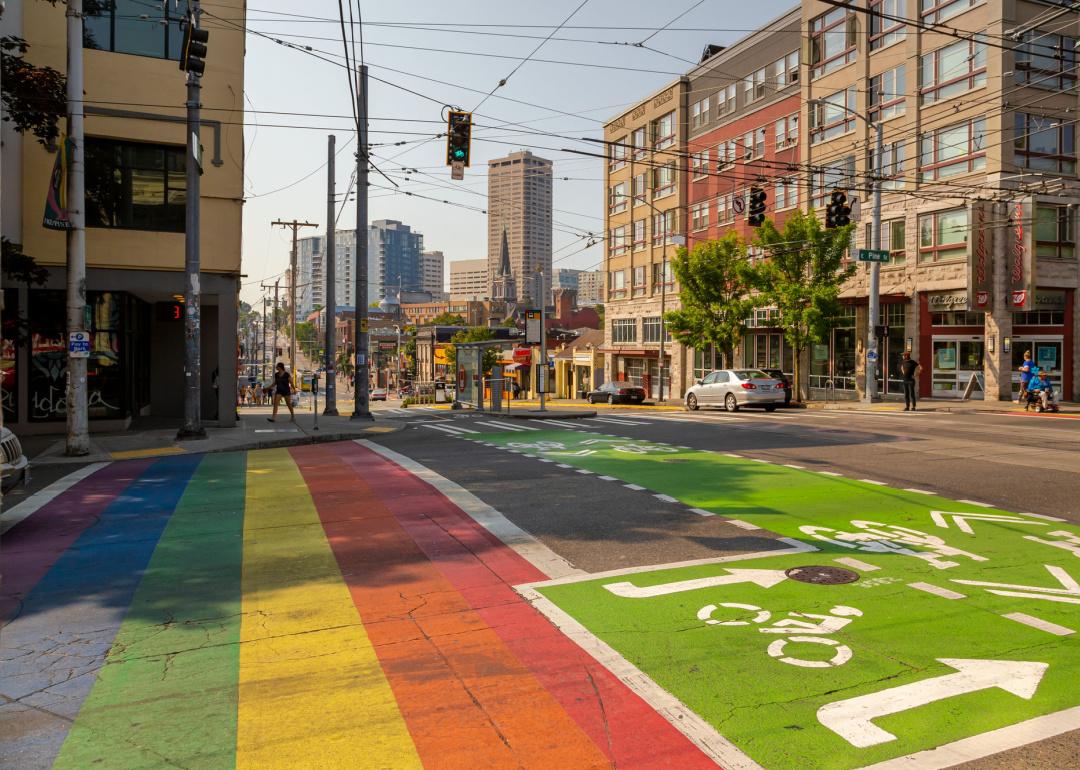
CineCam // Shutterstock
Washington
Pride rainbow crosswalk in Seattle’s Capitol Hill neighborhood
Capitol Hill has grown into an epicenter for gay bars and other LGBTQ+-oriented venues like restaurants and theaters
The Capitol Hill neighborhood of Seattle has become known for its queer nightlife, restaurants, and entertainment. The area is also home to Seattle’s LGBTQ+ health and community center, which offers a queer library, HIV testing, and other important resources. In 2021, the AIDS Memorial Pathway opened in the neighborhood.
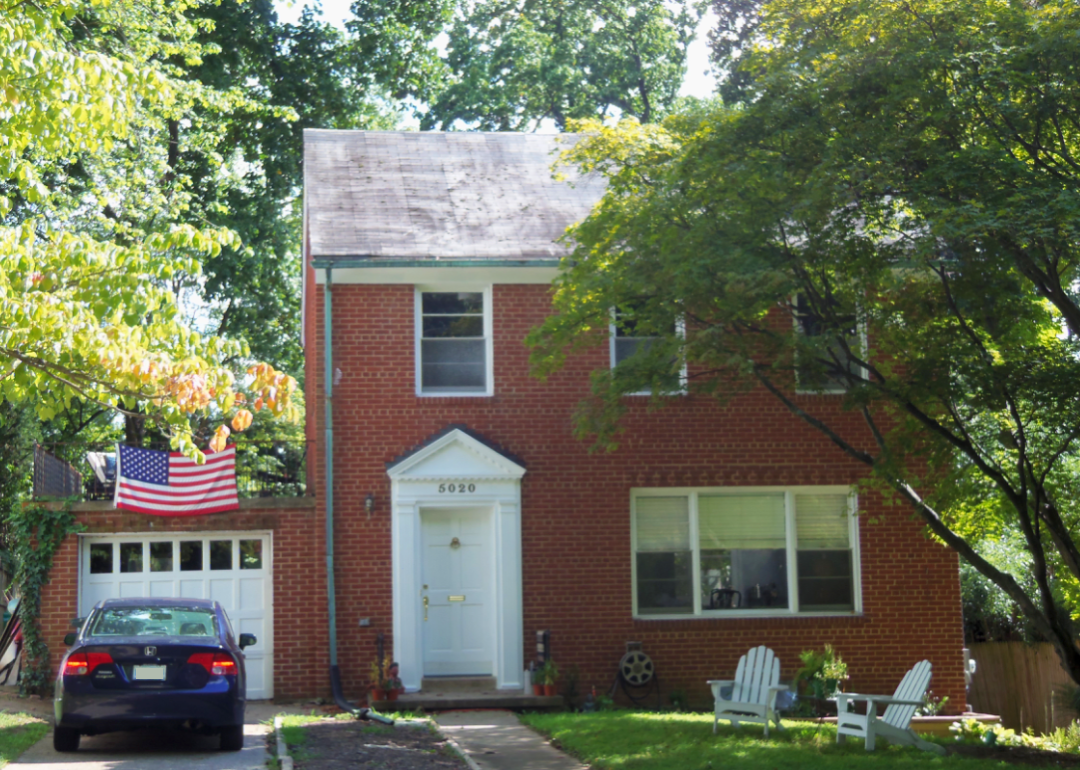
Farragutful // Wikimedia Commons
Washington DC
Exterior view of the Franklin E. Kameny House in Washington DC
The Dr. Franklin E. Kameny Residence, former home of the namesake gay rights activist, was added to the National Register of Historic Places
Franklin Kameny was a gay veteran and astronomer who lost his job in 1957 when he refused to answer questions regarding his sexuality, a relatively common occurrence after President Dwight Eisenhower’s ban on LGBTQ+ civil service employees. The experience led to Kameny becoming an outspoken advocate for LGBTQ+ rights before the events at Stonewall launched the gay liberation movement. He founded the Mattachine Society of Washington, D.C., a queer civil rights organization, testified before Congress, and aided in the campaign to declassify homosexuality as a mental illness. The Dr. Franklin E. Kameny Residence, where Kameny lived and held meetings of the Mattachine Society, is a historic landmark.
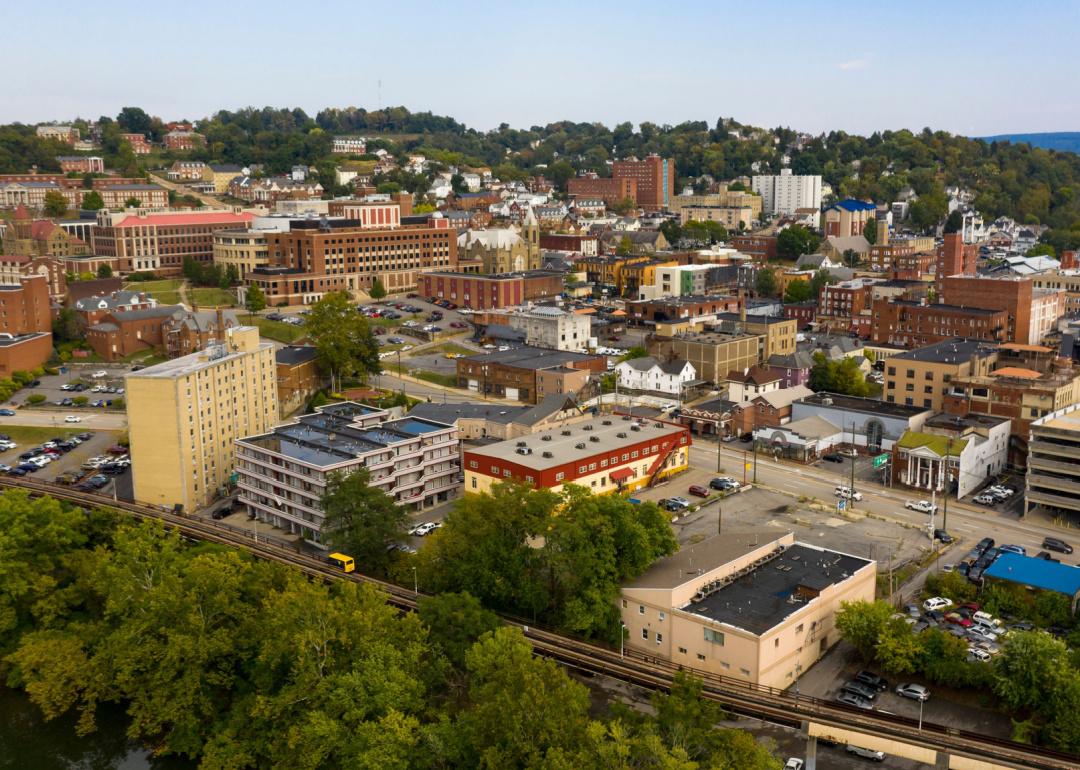
Real Window Creative // Shutterstock
West Virginia
Elevated view of Morgantown, West Virginia
335 High Street in Morgantown has been a gay bar under various names for more than three decades
The Class Act opened in 1988 as a gay bar in Morgantown. It was a hub for LGBTQ+ people, although it was necessary at the time to sneak in and out of the bar through its unlit alley entrance to avoid police. After the bar closed in 2000, a couple who met at The Class Act bought the building and opened another gay bar, Vice Versa. The new bar continues to be a hub, not only for Morgantown residents but for people in neighboring states.

Canva
Wisconsin
Books in a bookstore
Outwords Books is Milwaukee’s only LGBTQ+ bookstore
Outwords Books has been in business for almost 30 years and has provided a safe haven for queer book lovers who haven’t come out yet or have been out for a long time. In addition to selling books, the store serves as a hub for the Milwaukee community in other ways, offering coffee and events such as a book club.

PATRICK T. FALLON/AFP via Getty Images
Wyoming
Flowers rest on the Matthew Shepard Memorial Bench
The Matthew Shepard Memorial Bench commemorates the life of Matthew Shepherd, a gay University of Wyoming student who was beaten to death in 1998
In 1998, gay University of Wyoming student Matthew Shepard was brutally beaten and left to die by his attackers. His parents created the Matthew Shepard Foundation in the aftermath of his death. The Foundation ultimately helped pass the Matthew Shepard and James Byrd Jr. Hate Crimes Prevention Act in 2009, which added gender, sexuality, and disability to protected categories under hate crime prosecution criteria, among other important additions. In Shepard’s memory, a bench on the University of Wyoming campus bears his name.